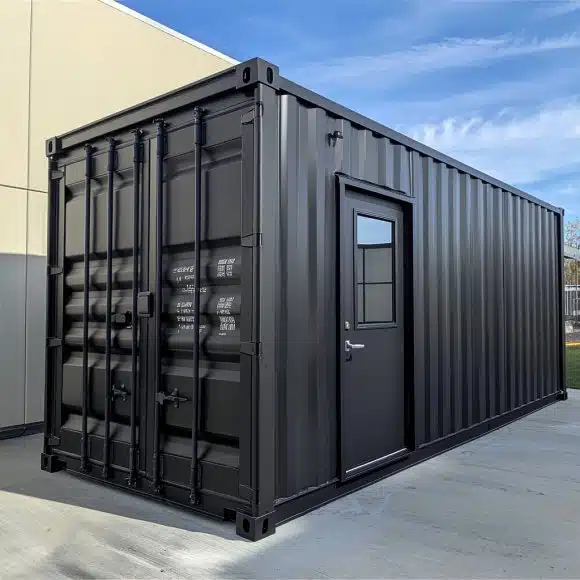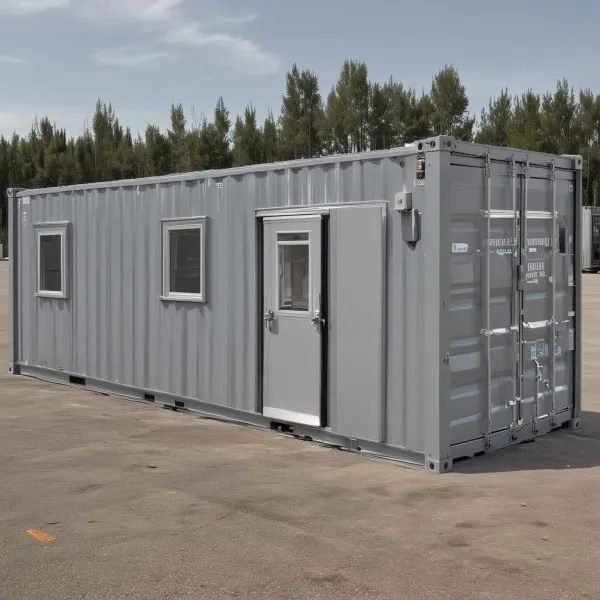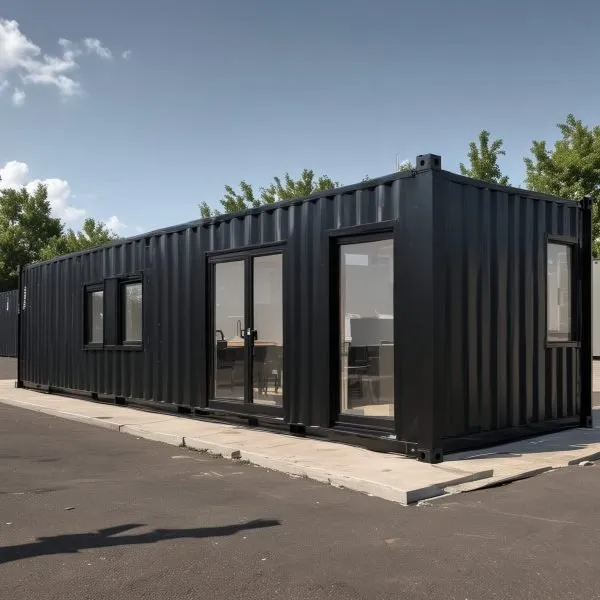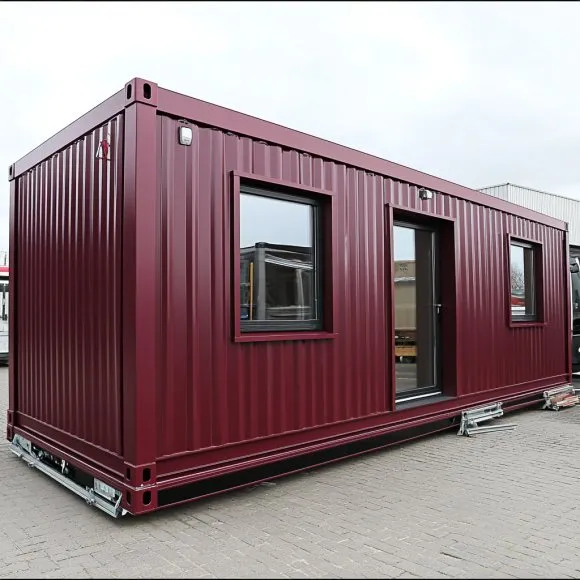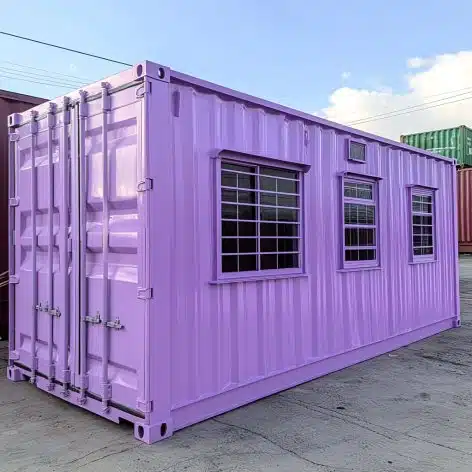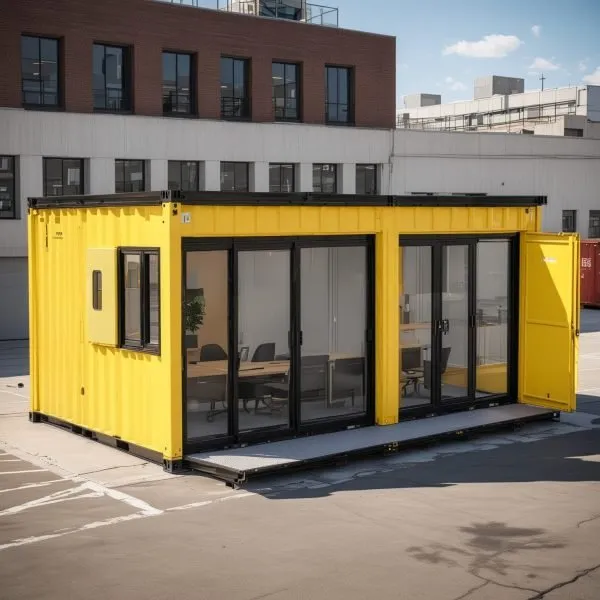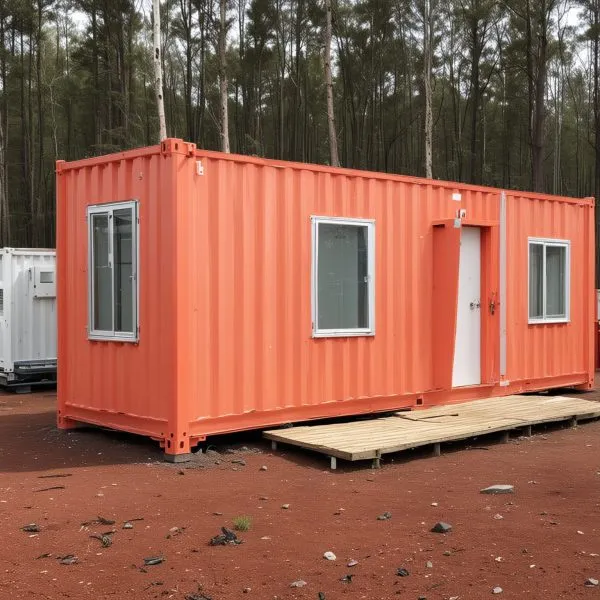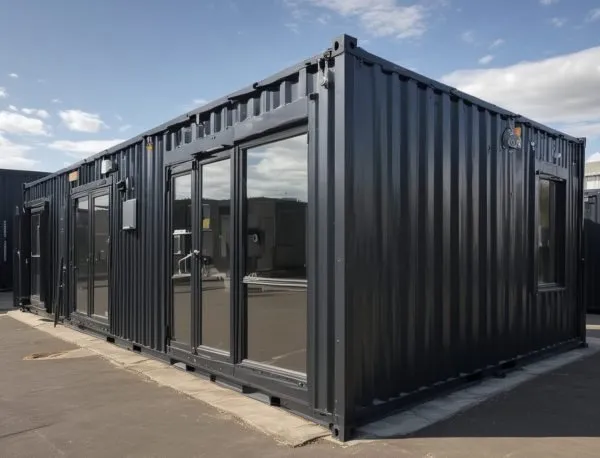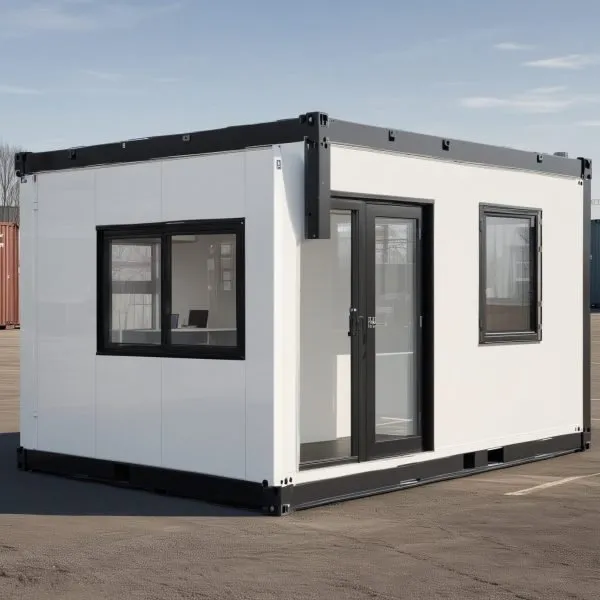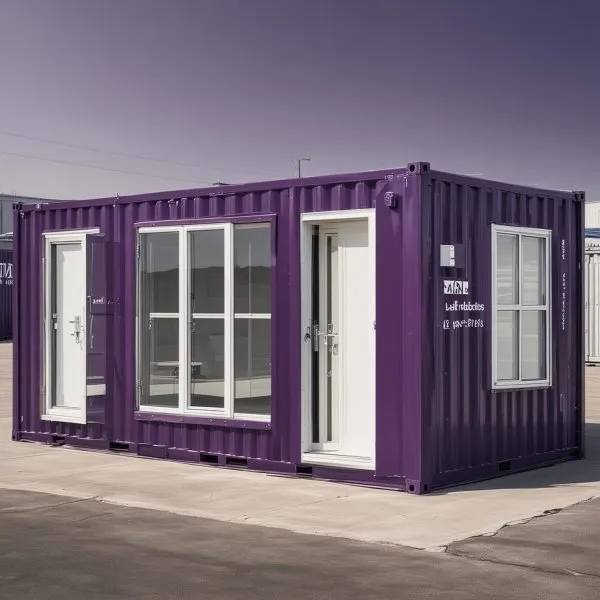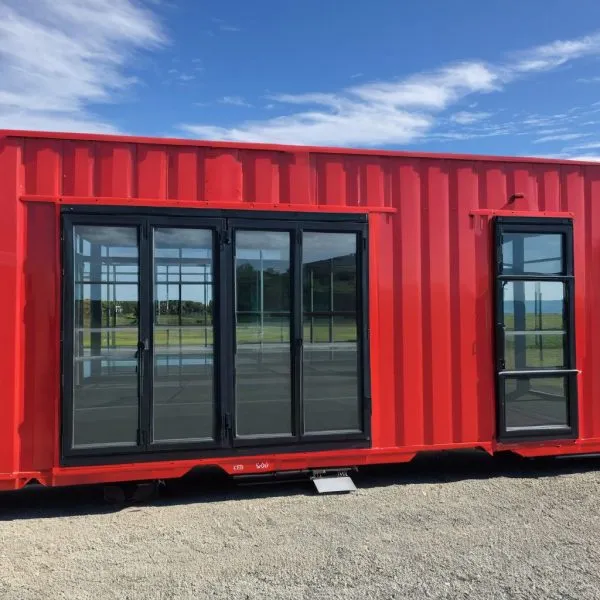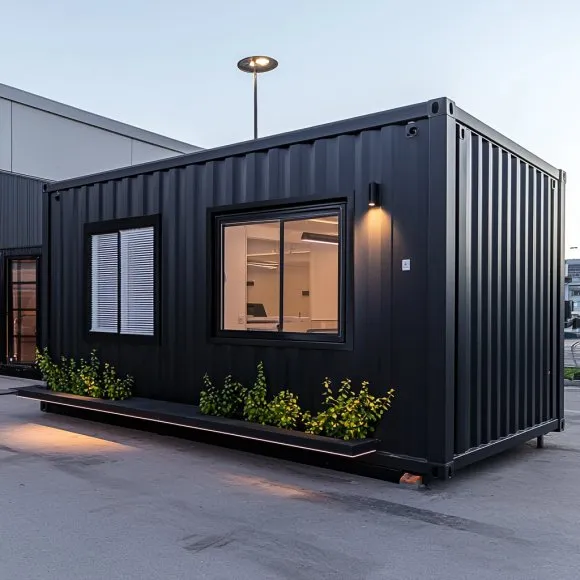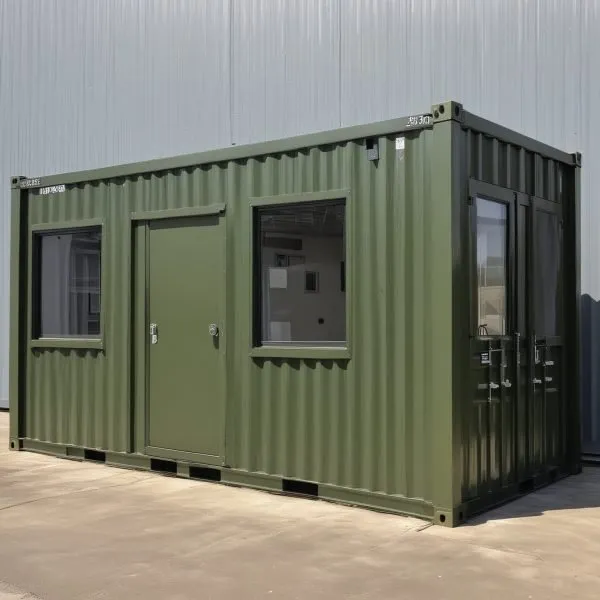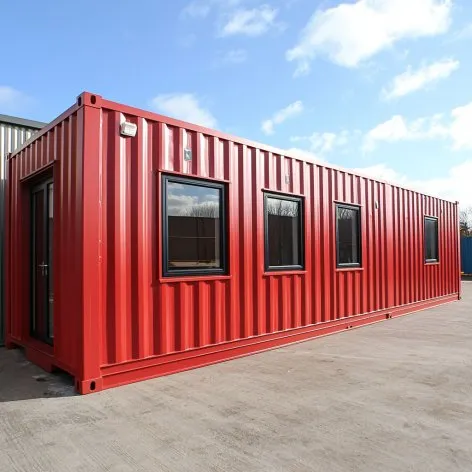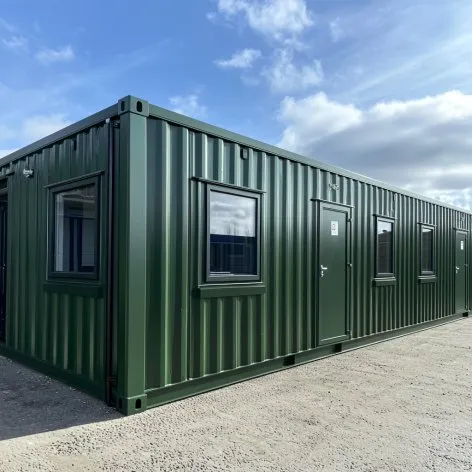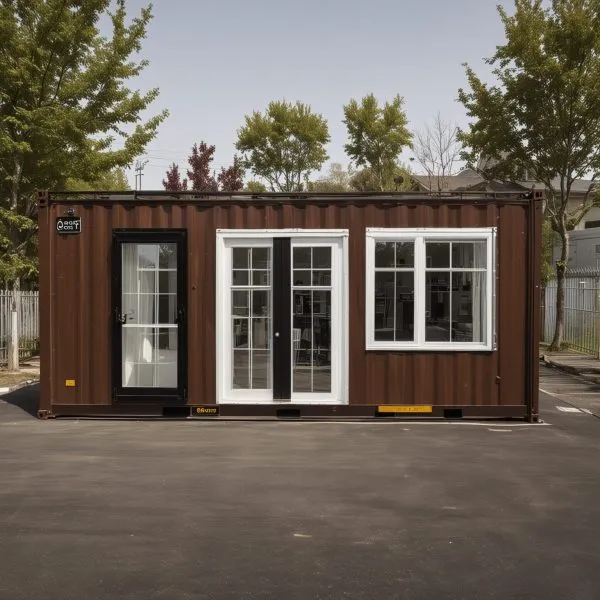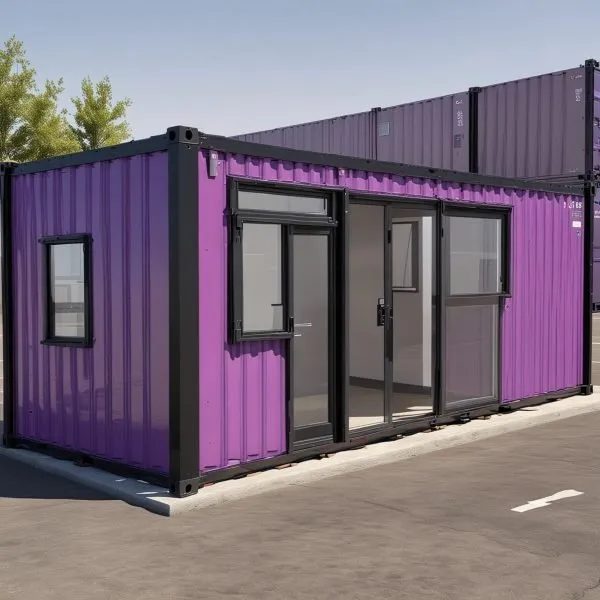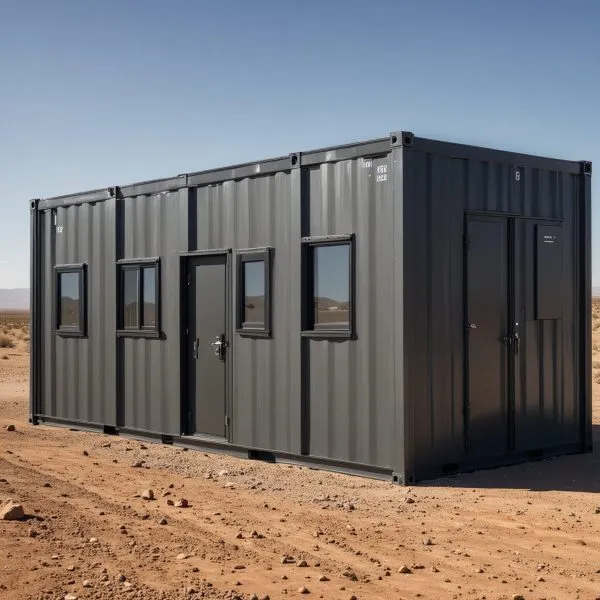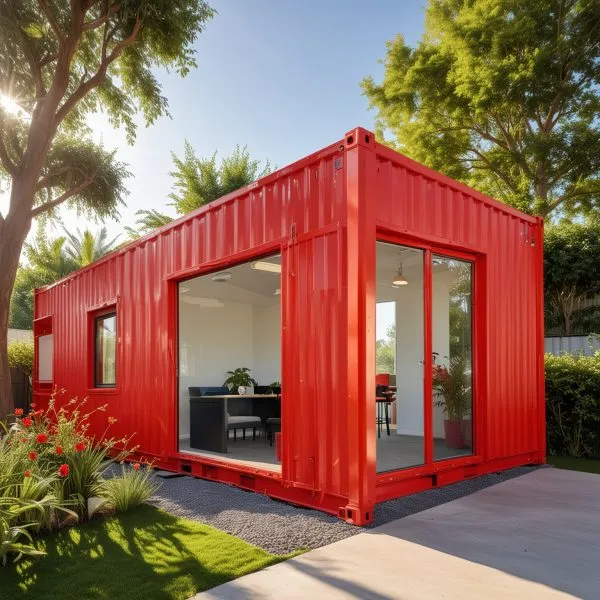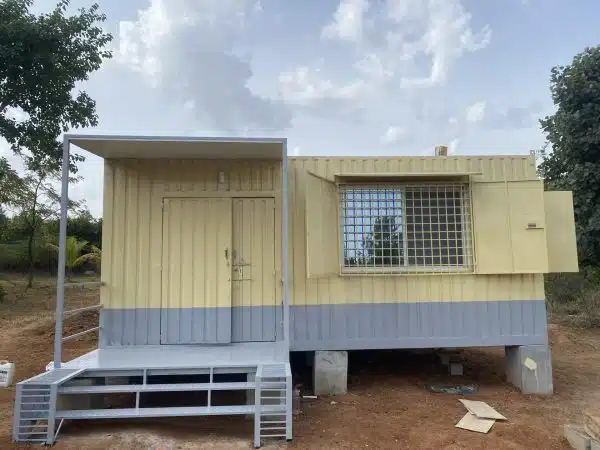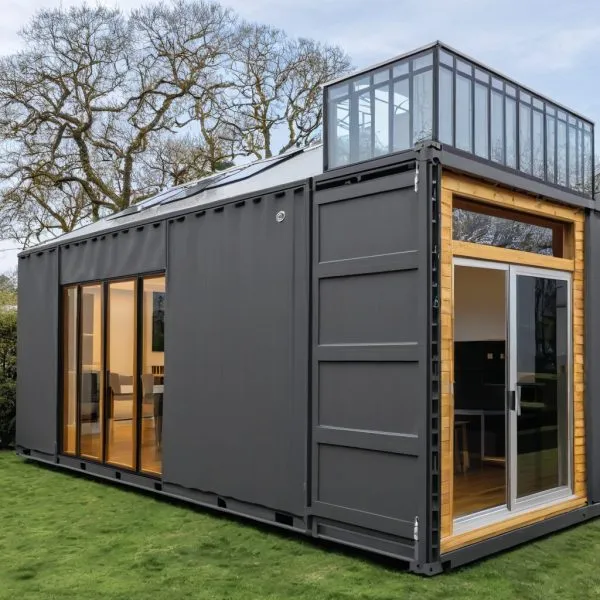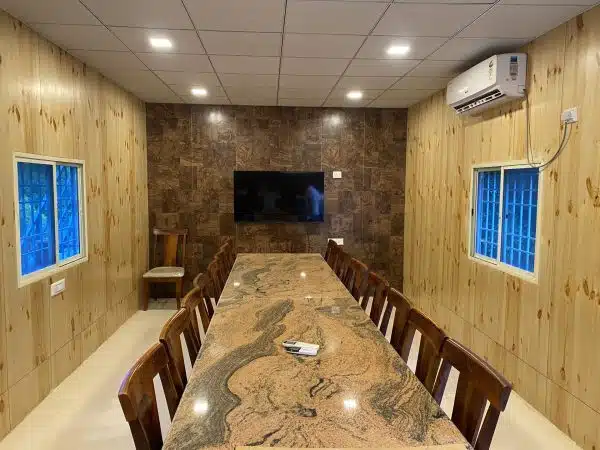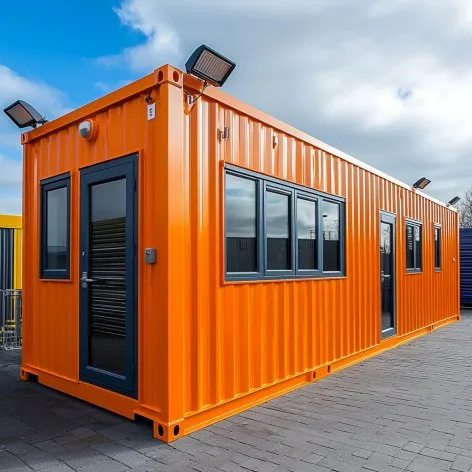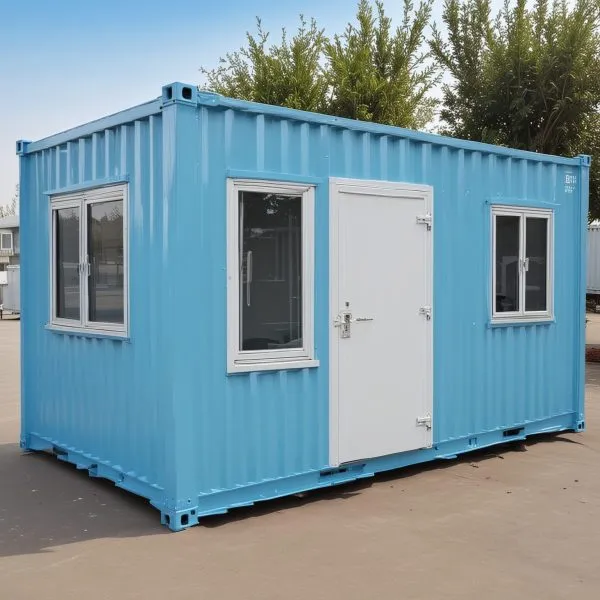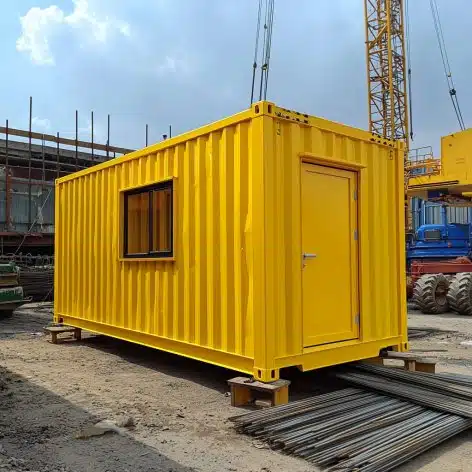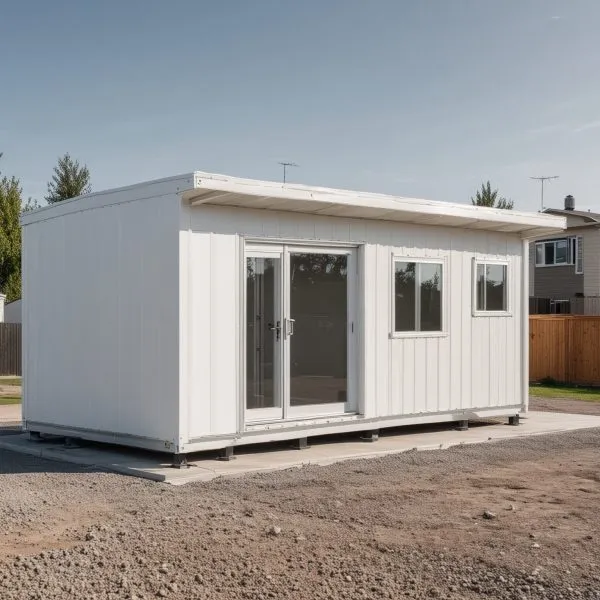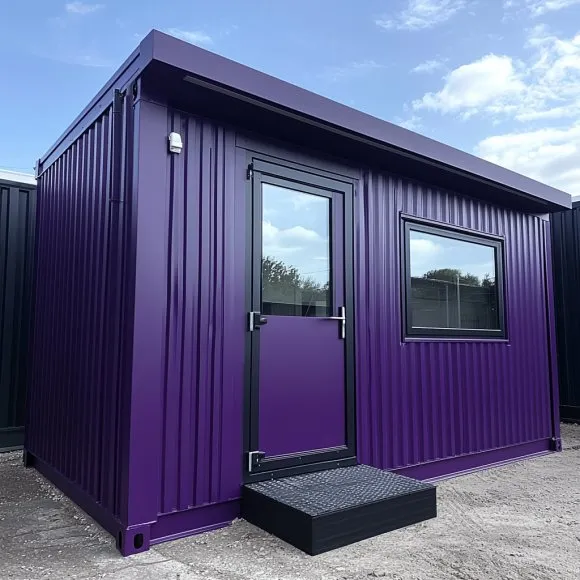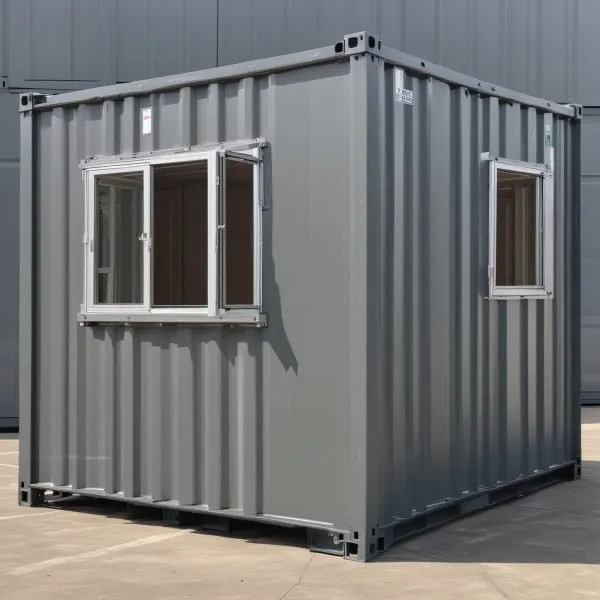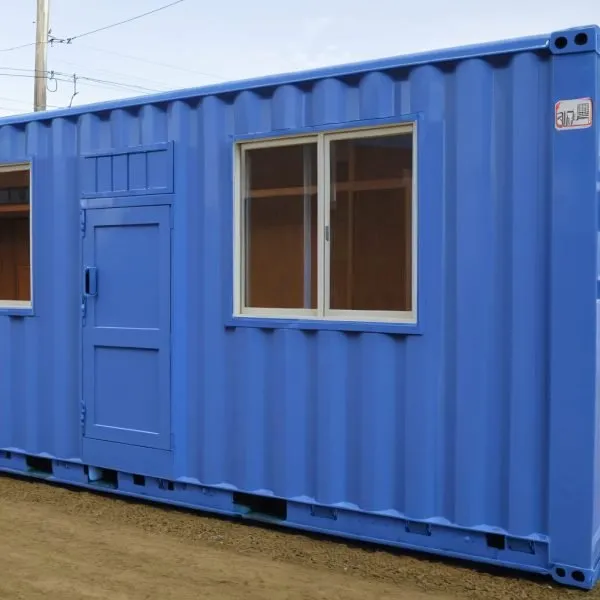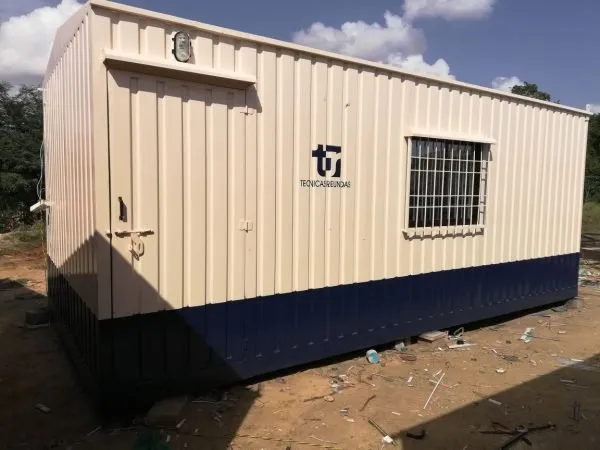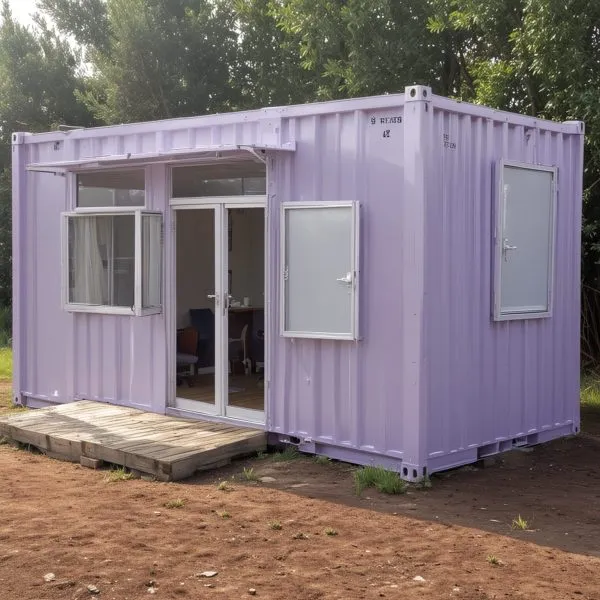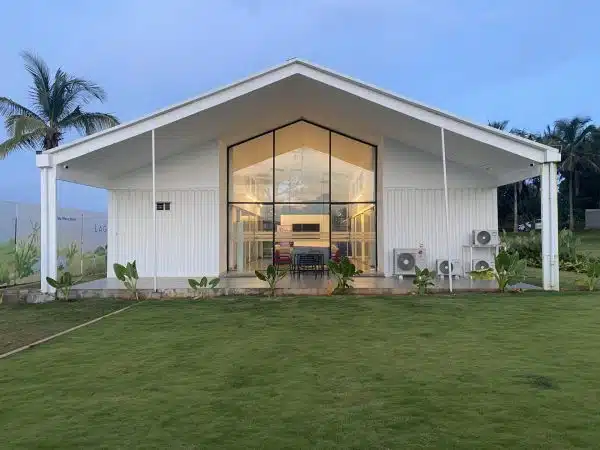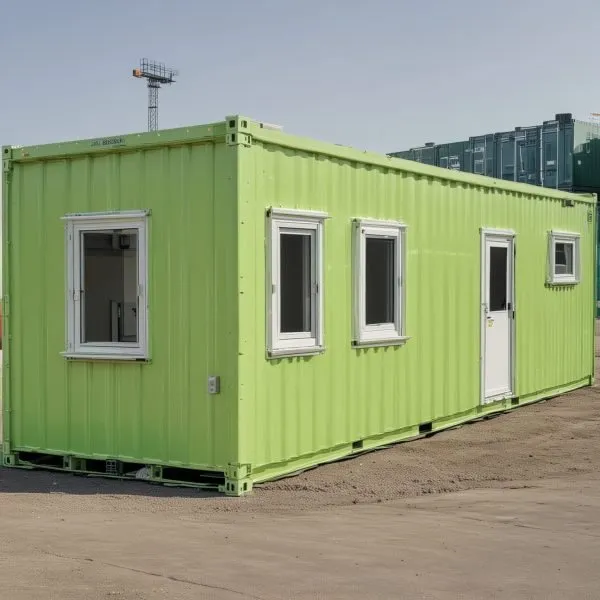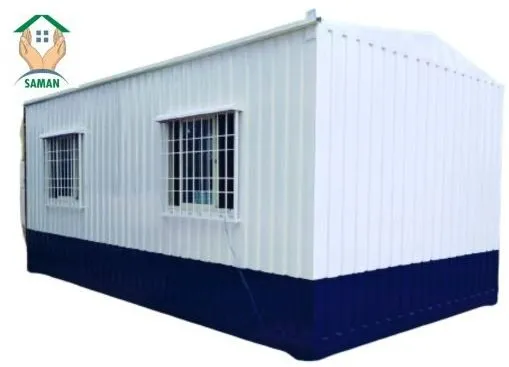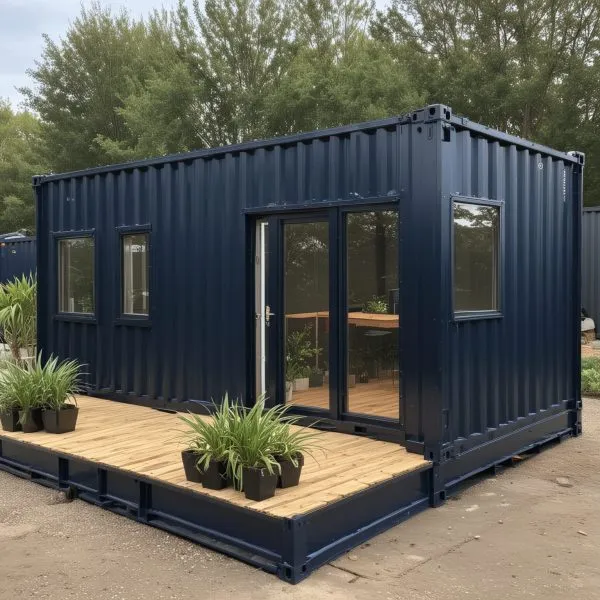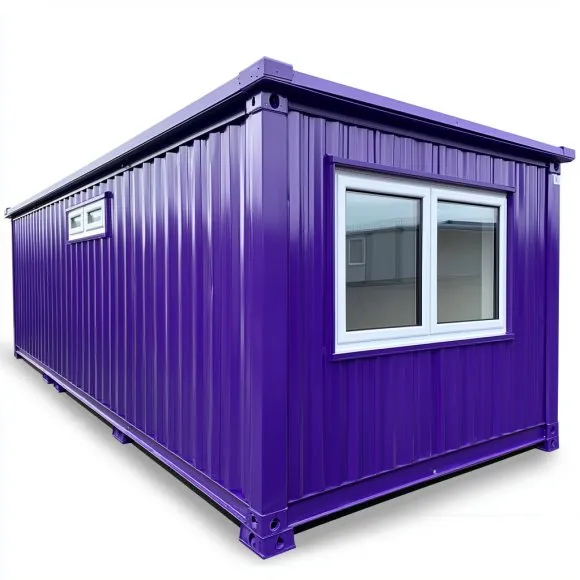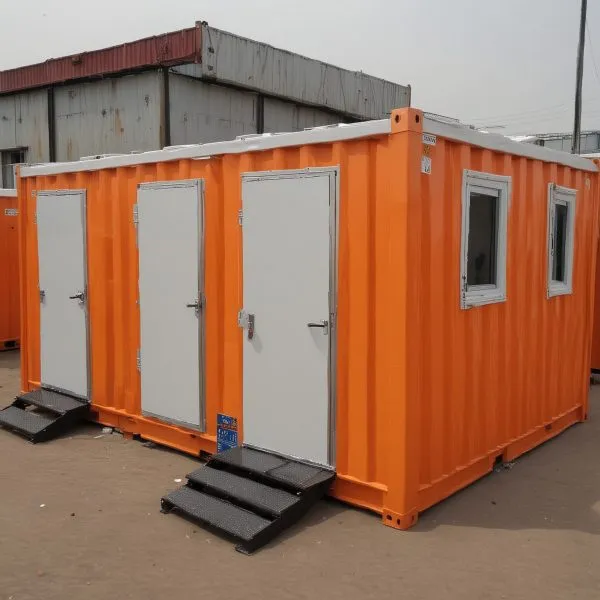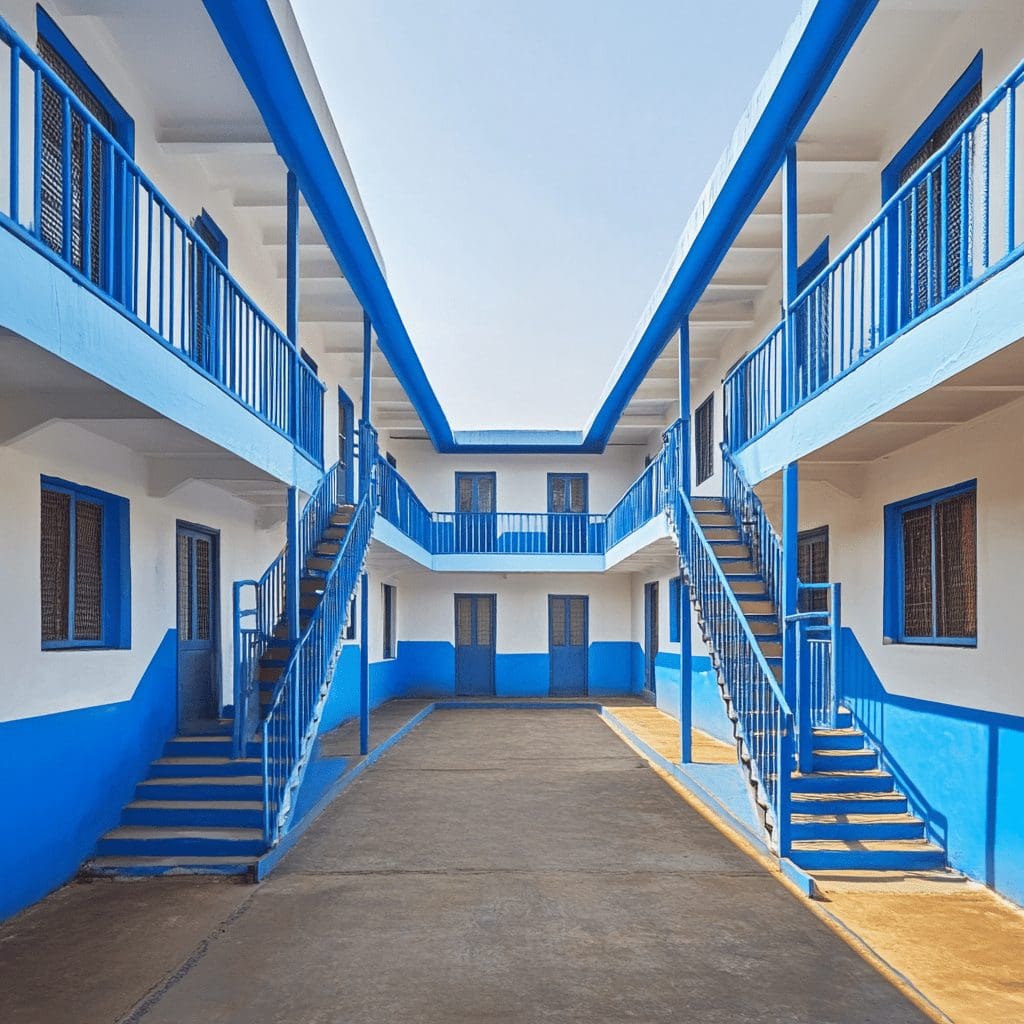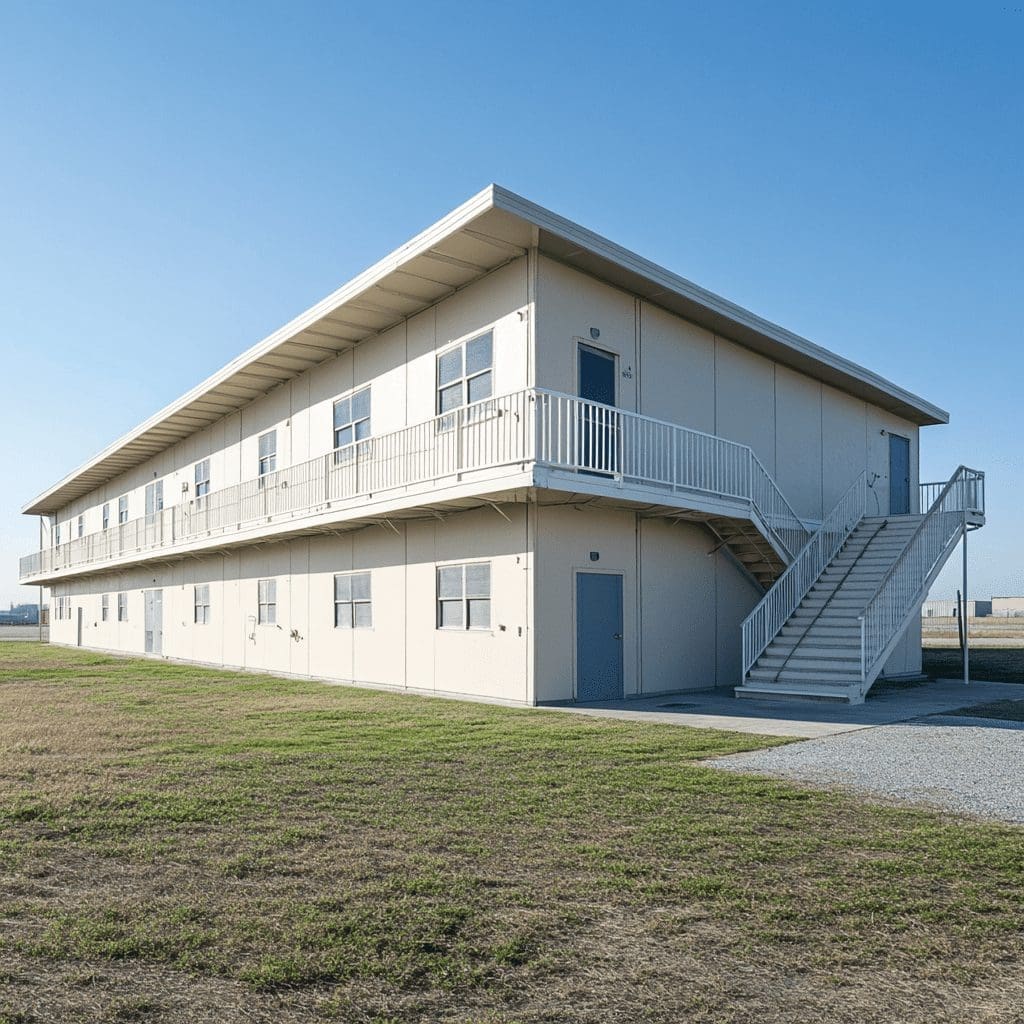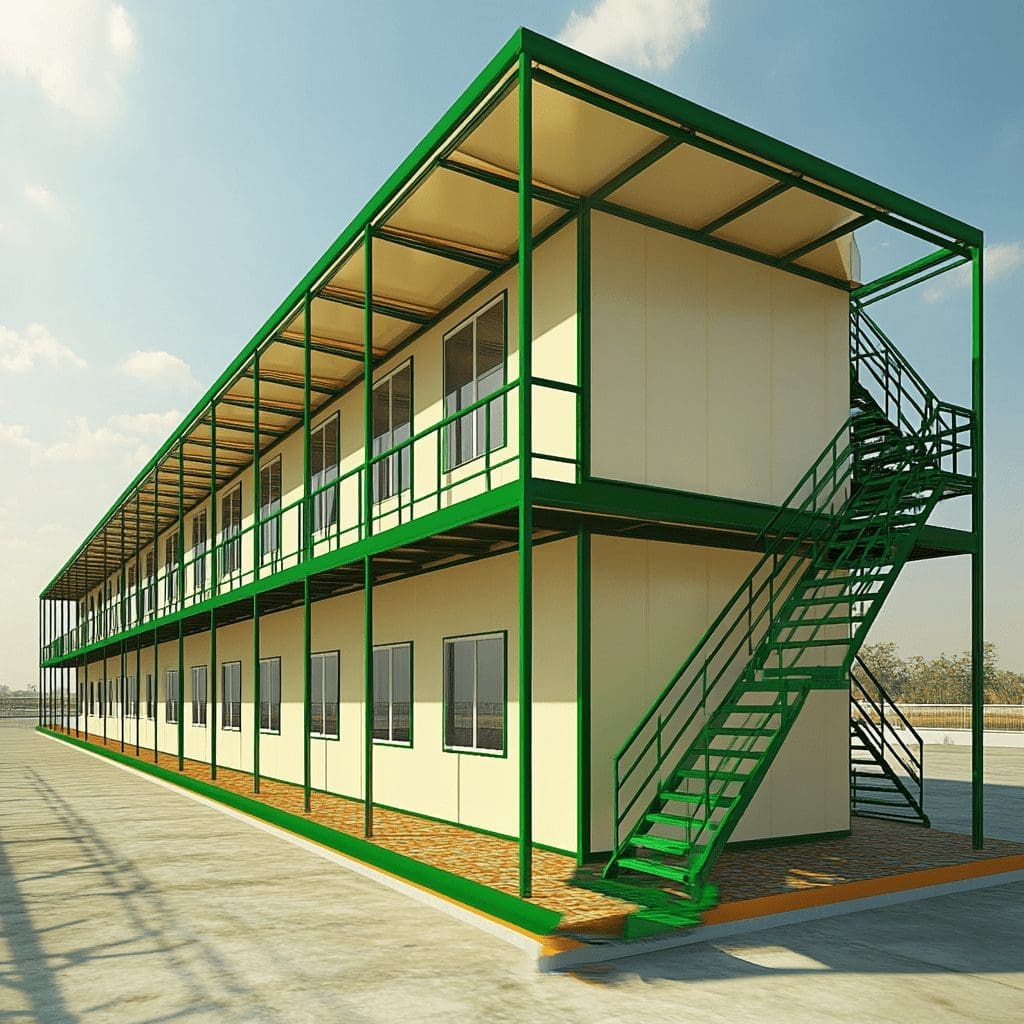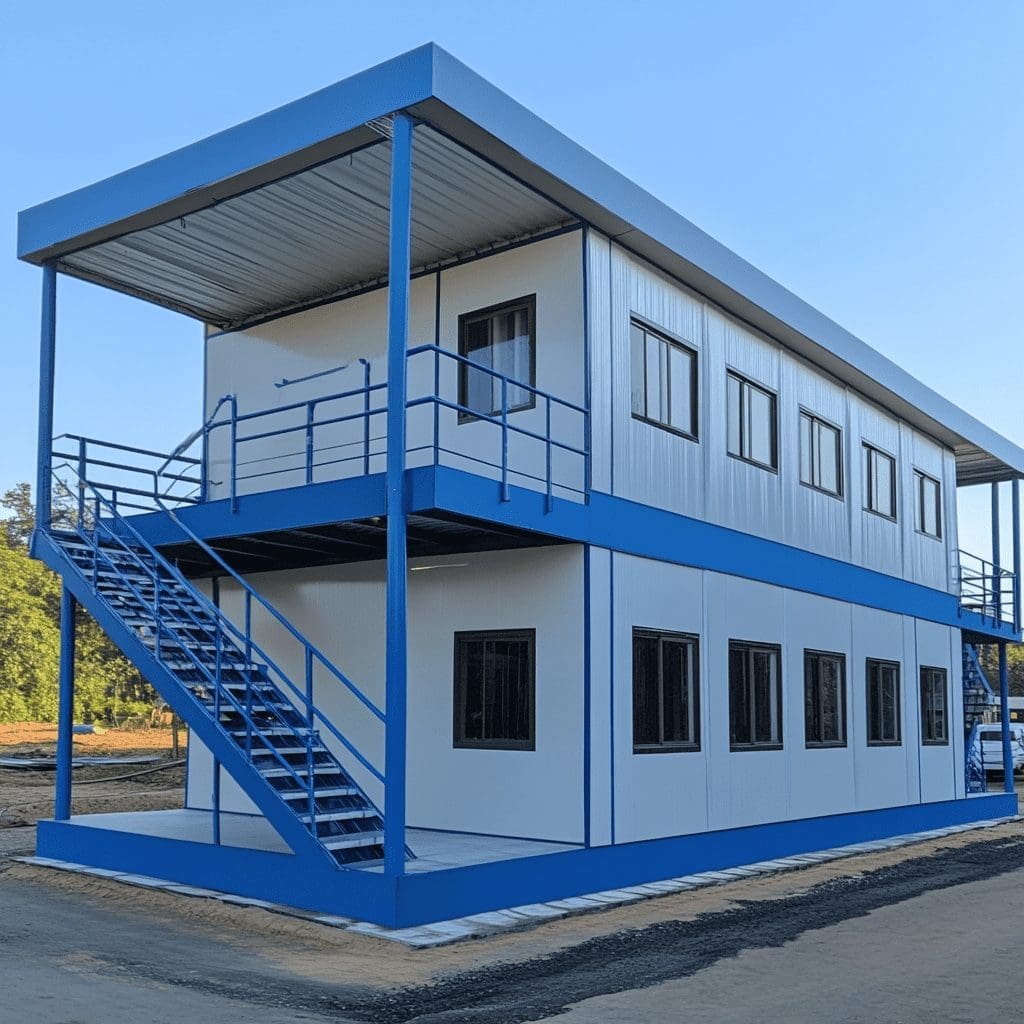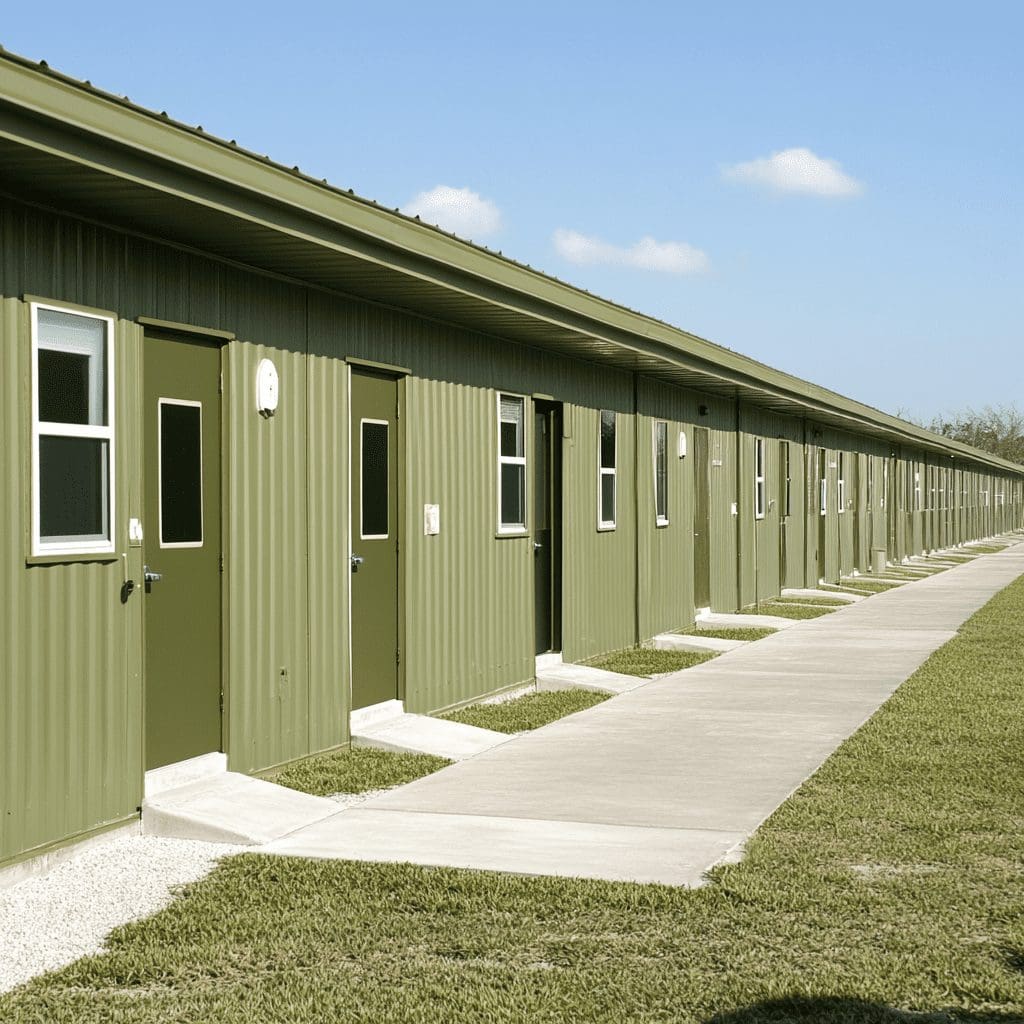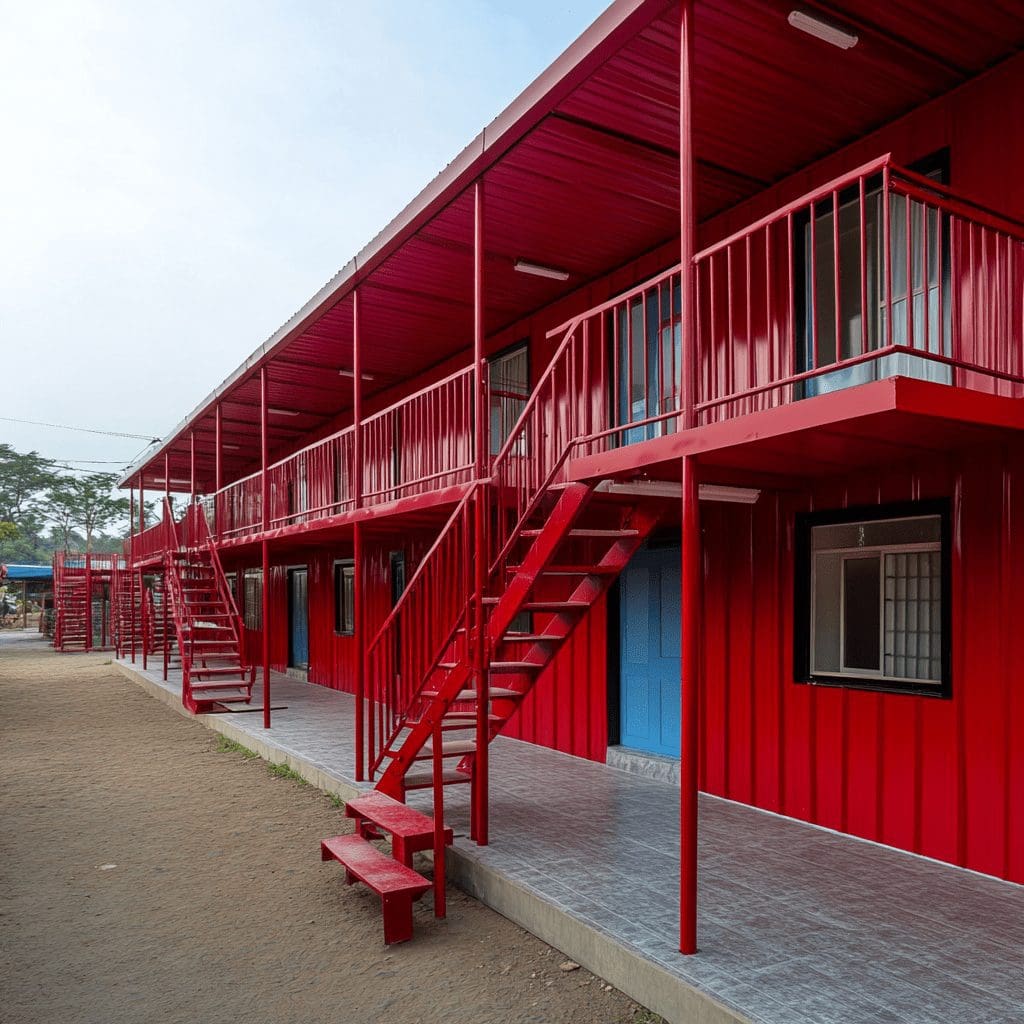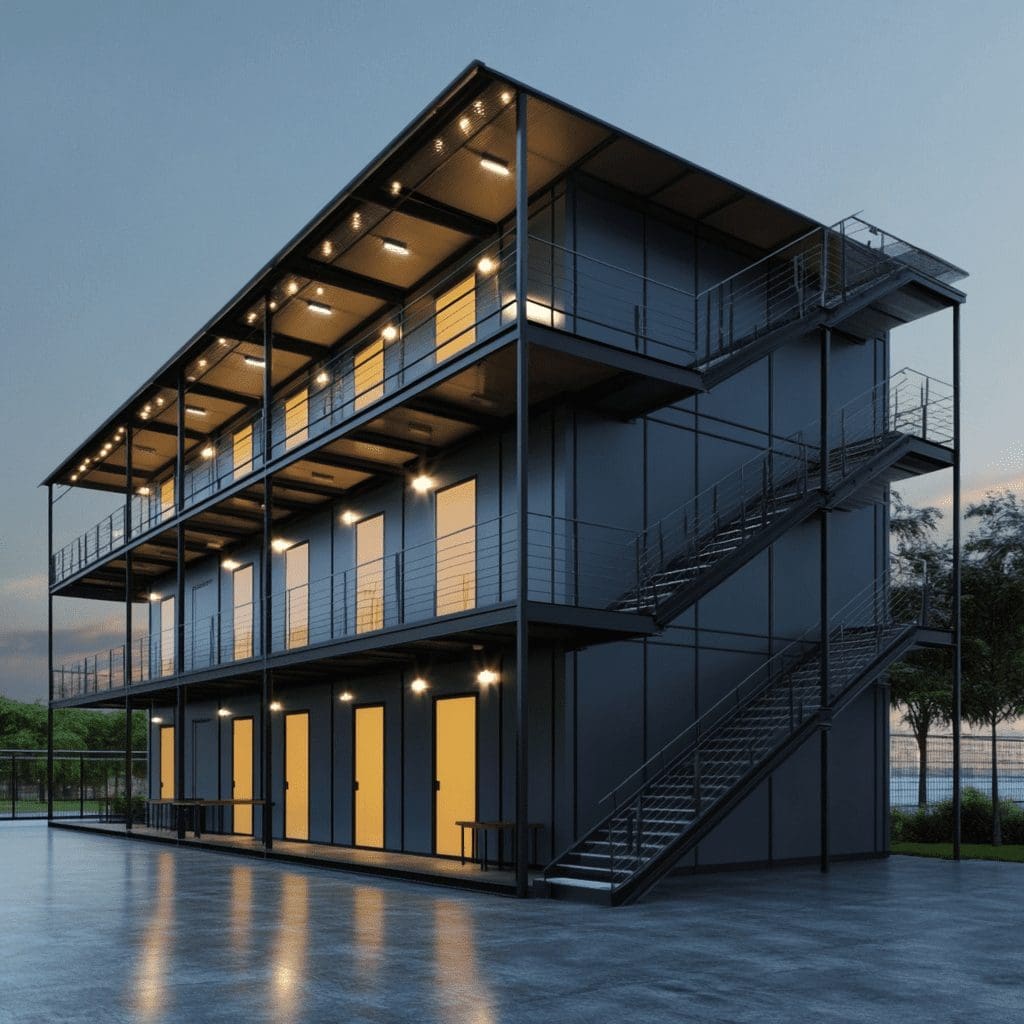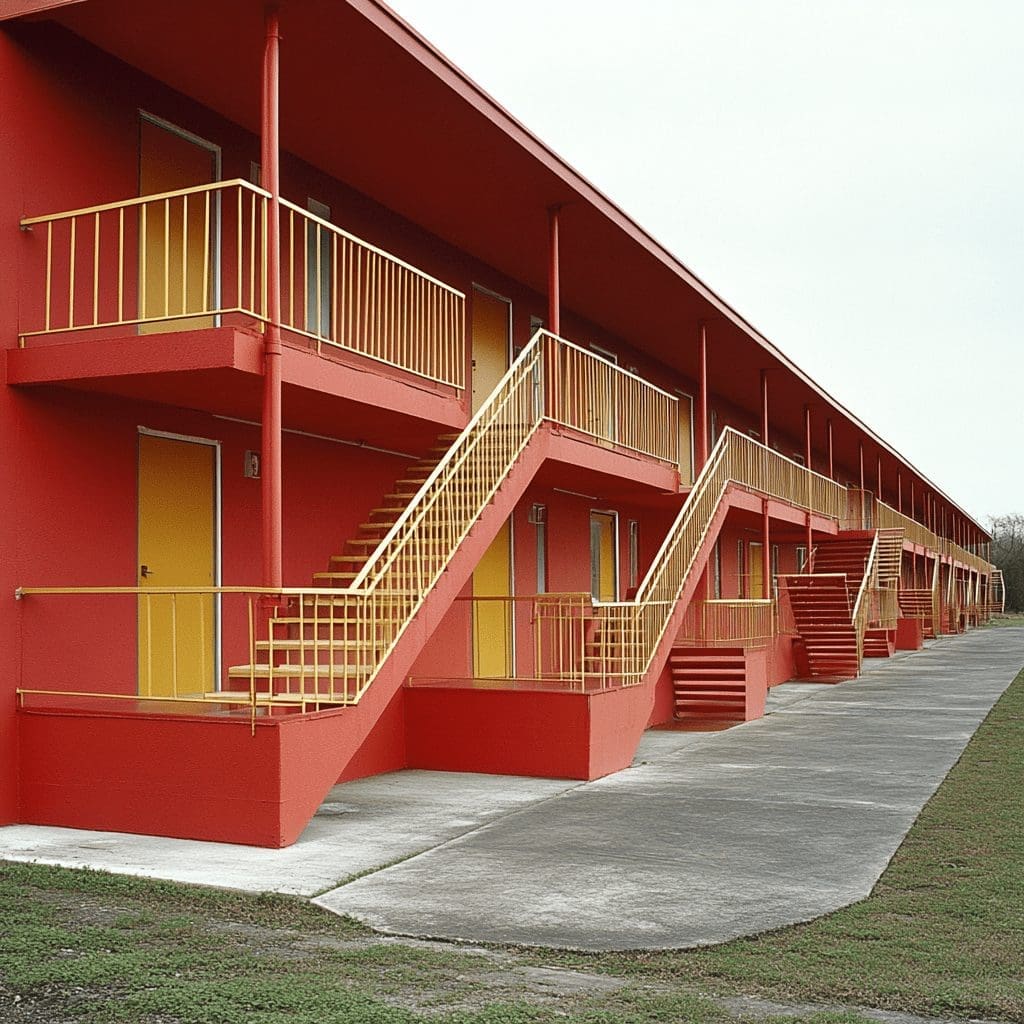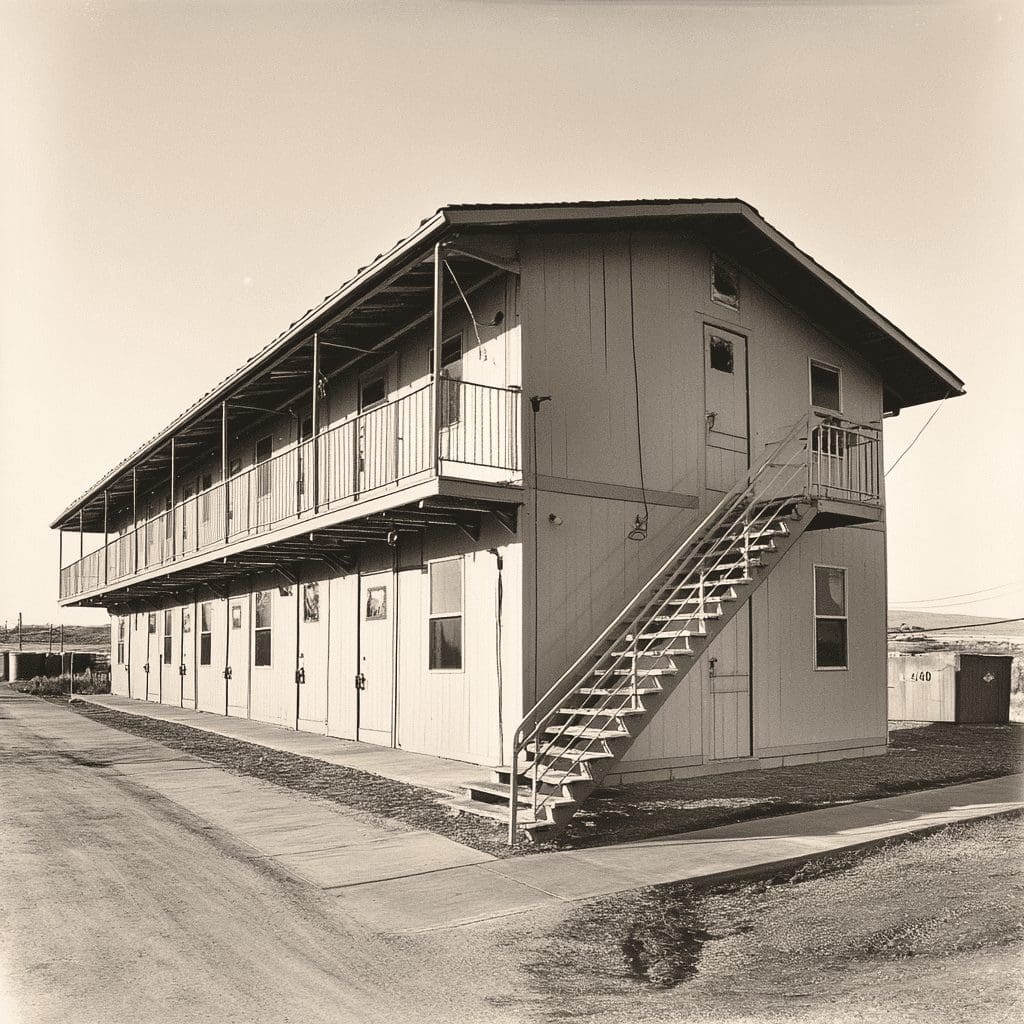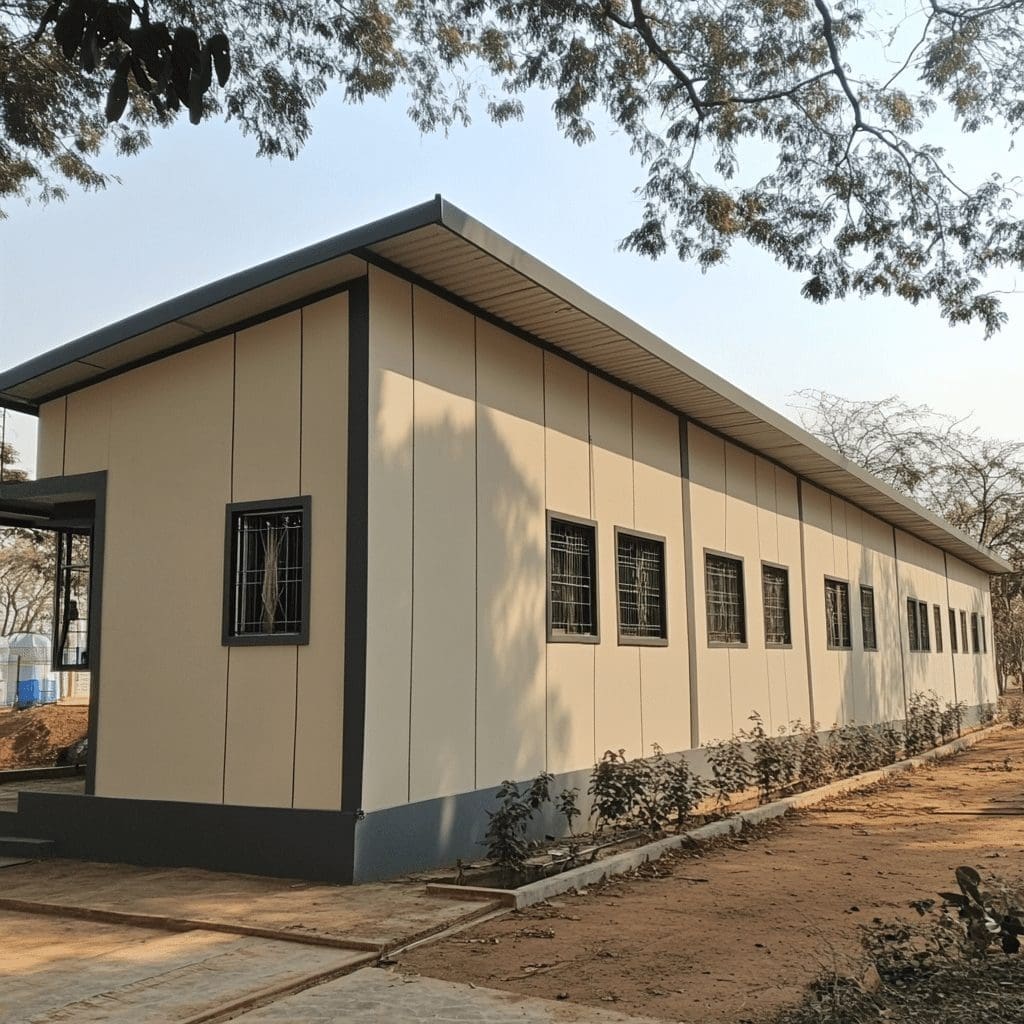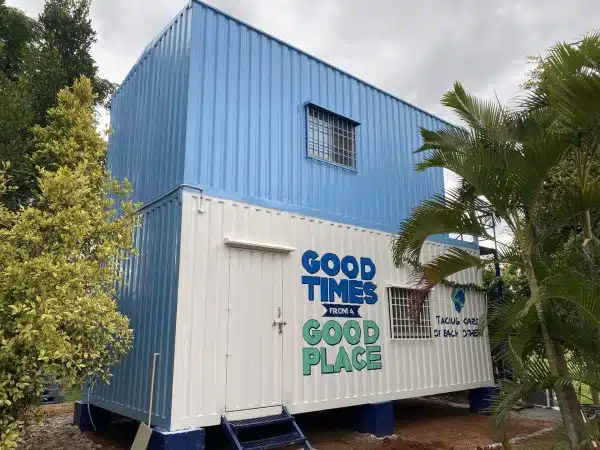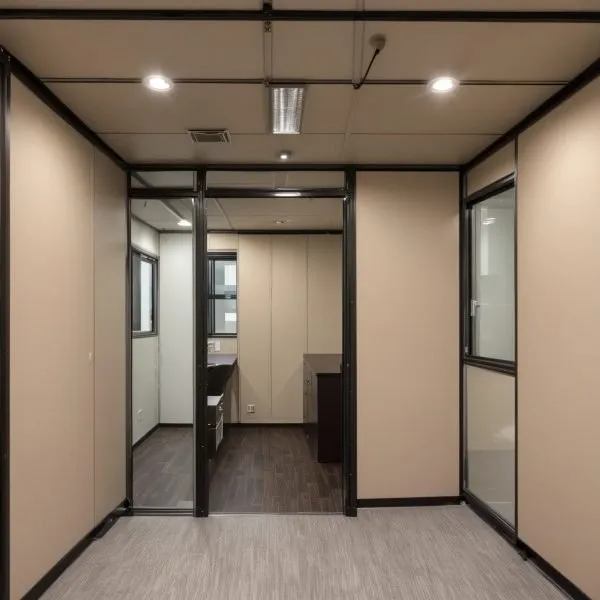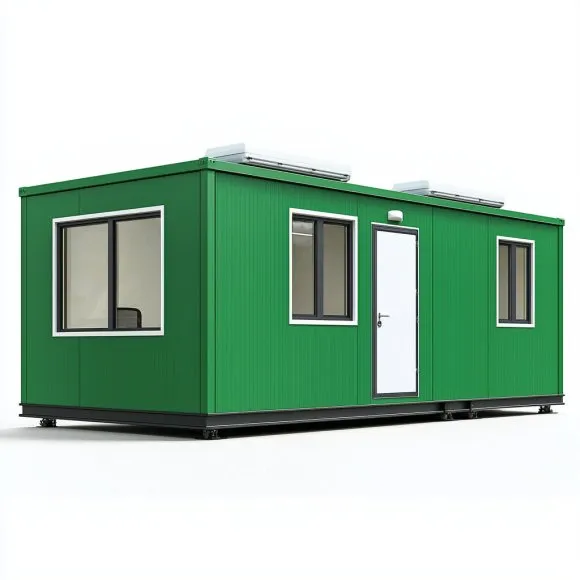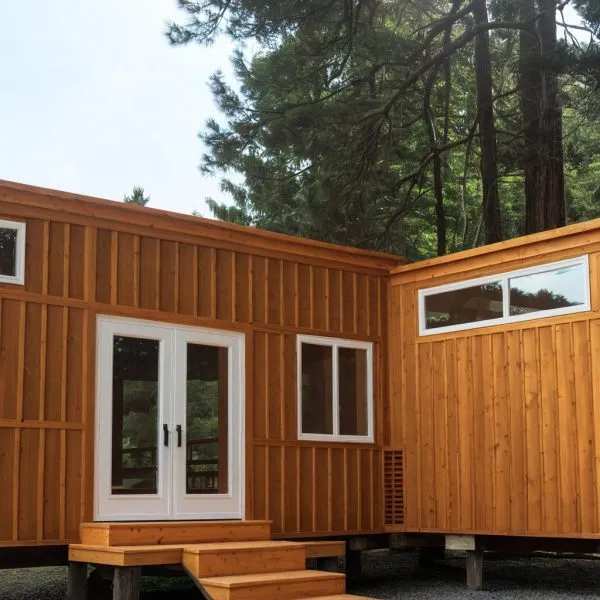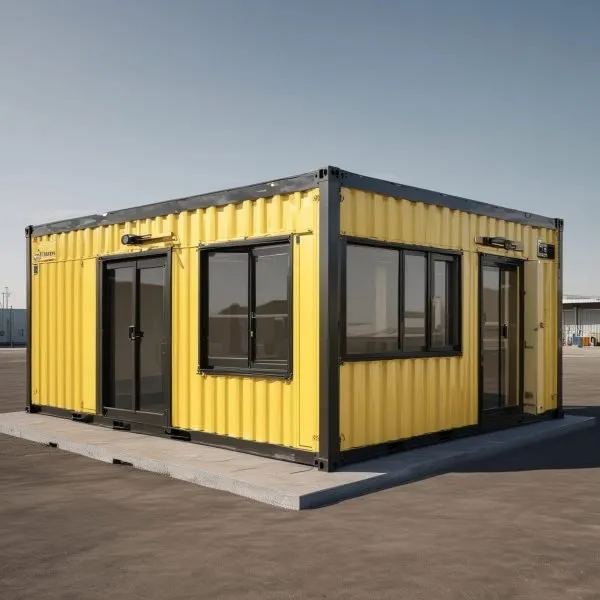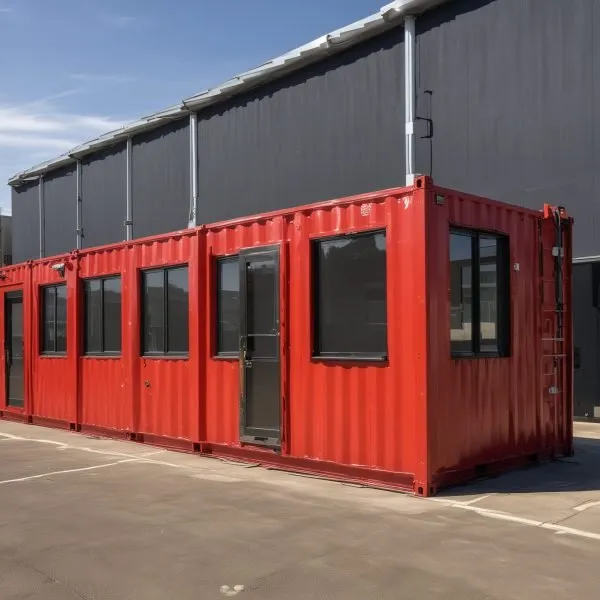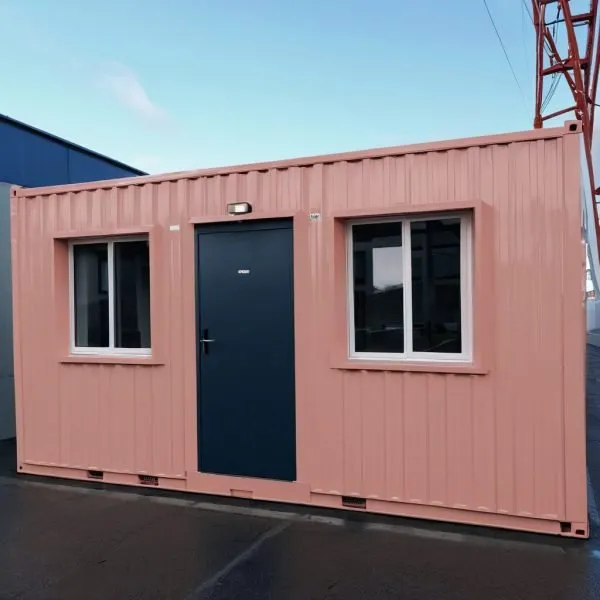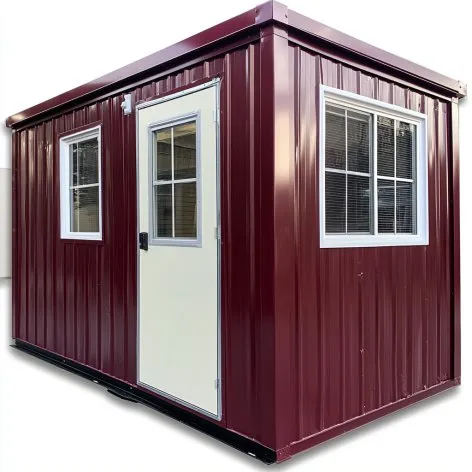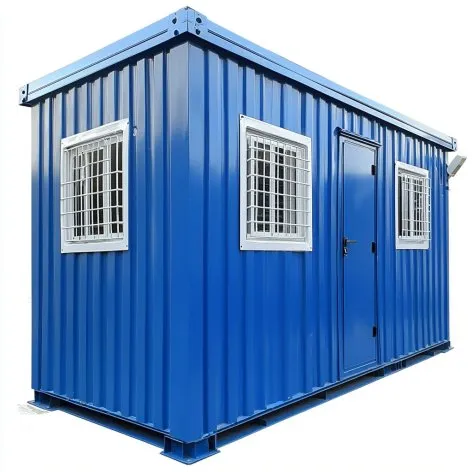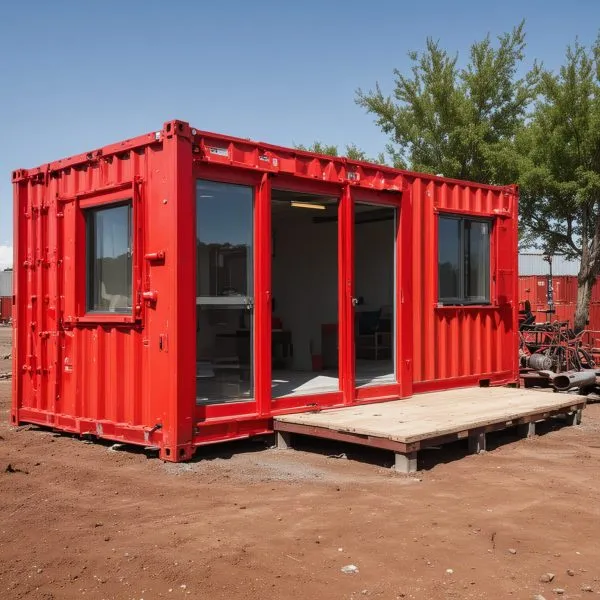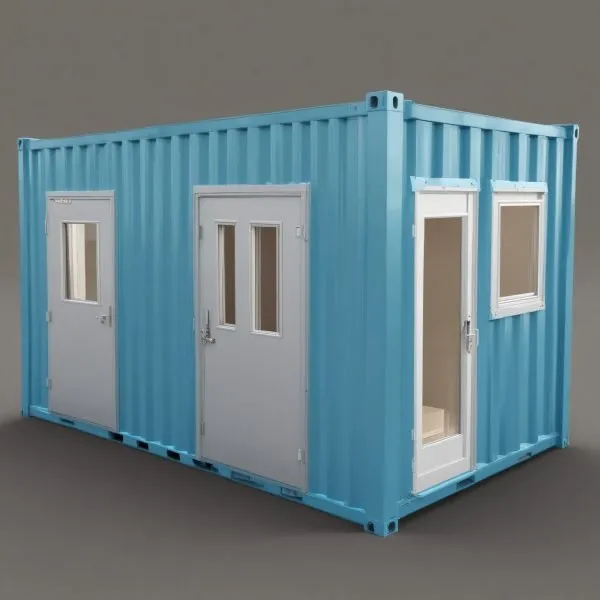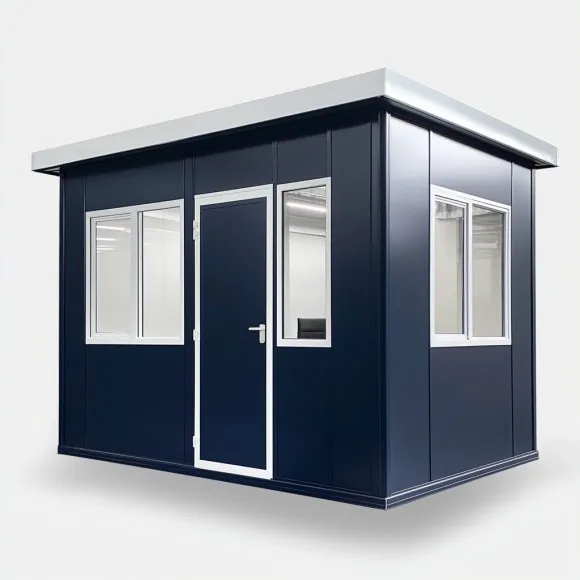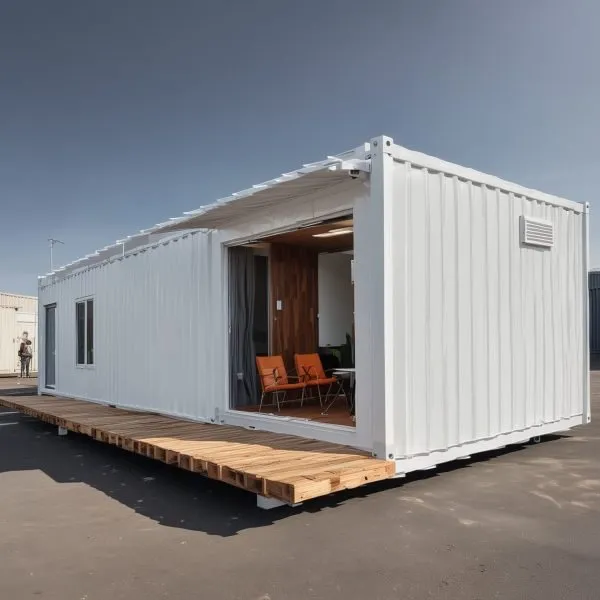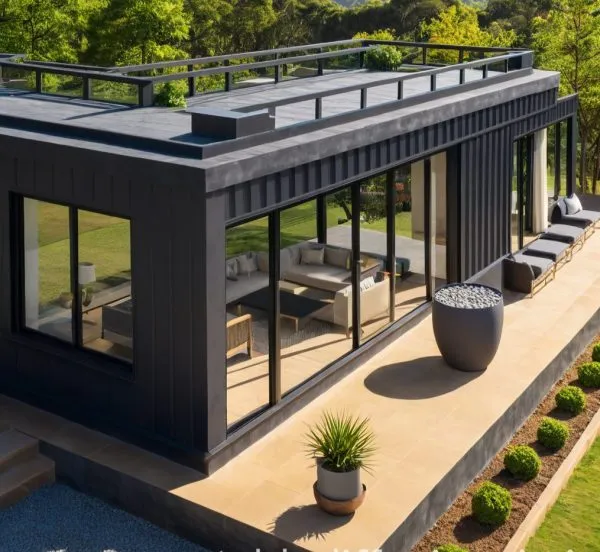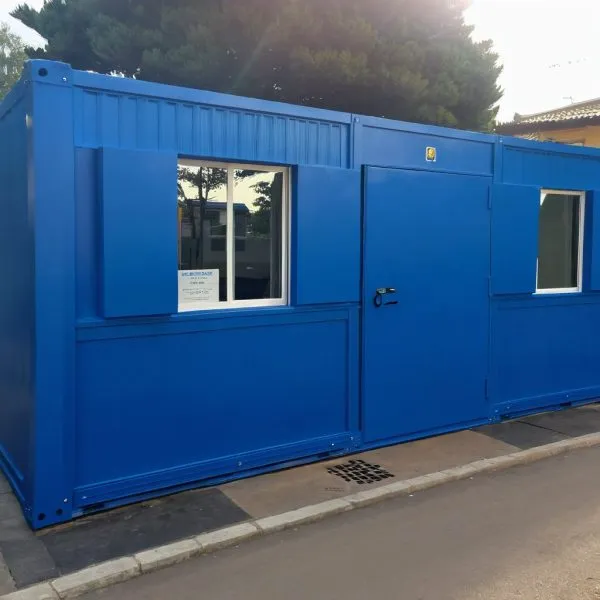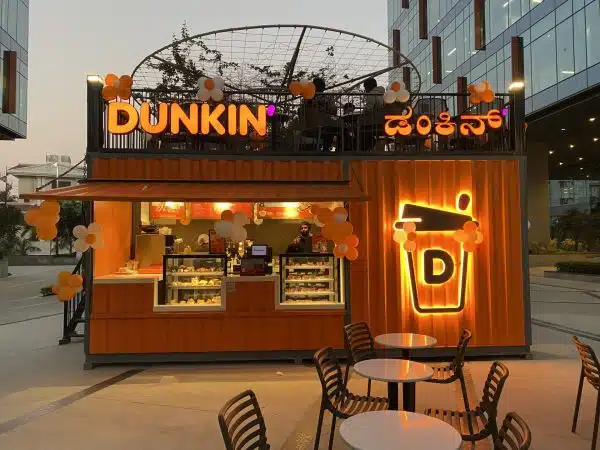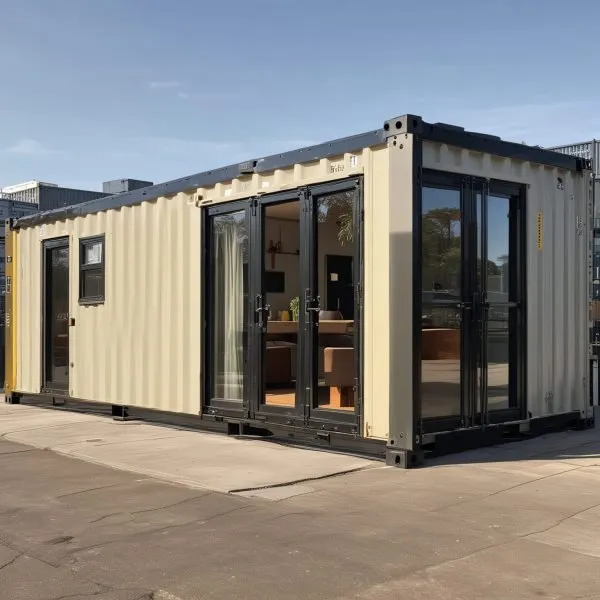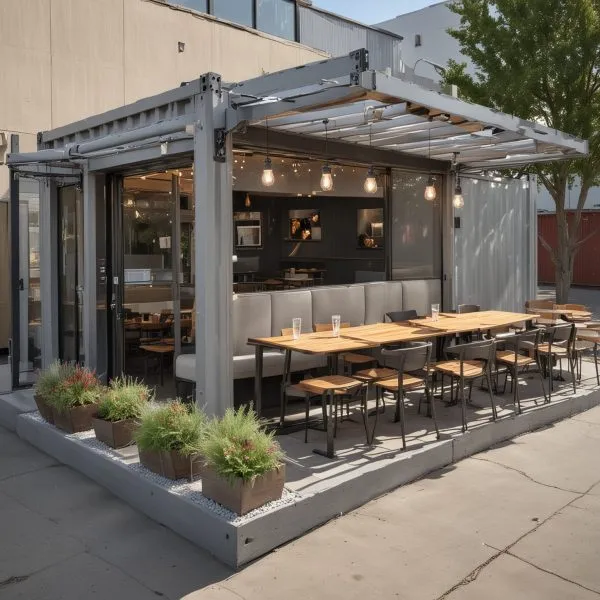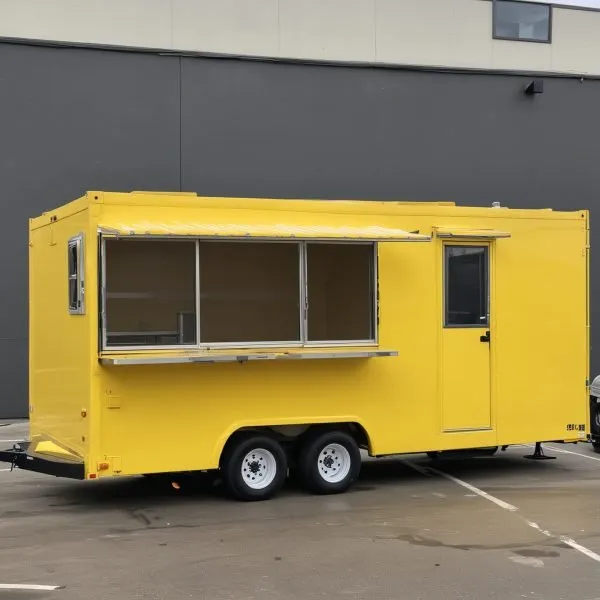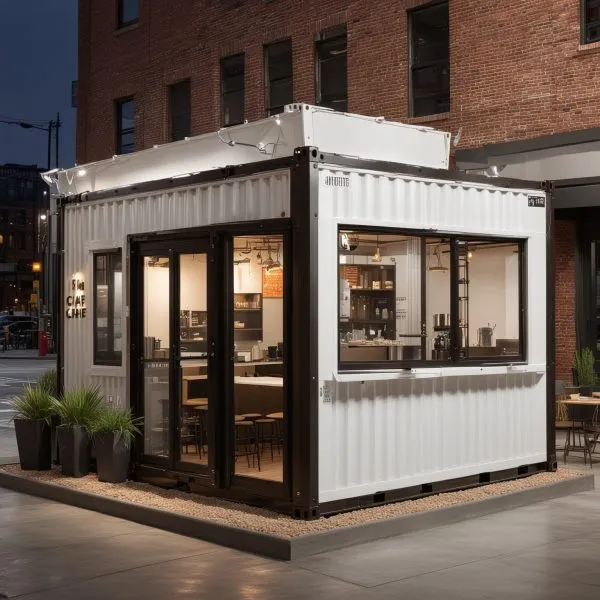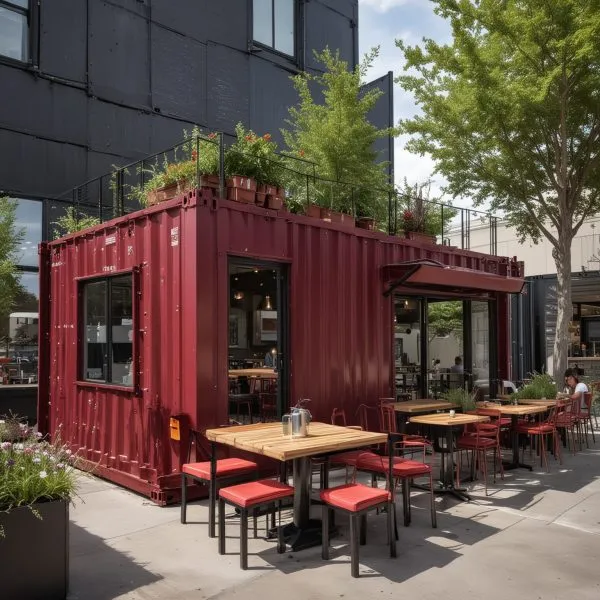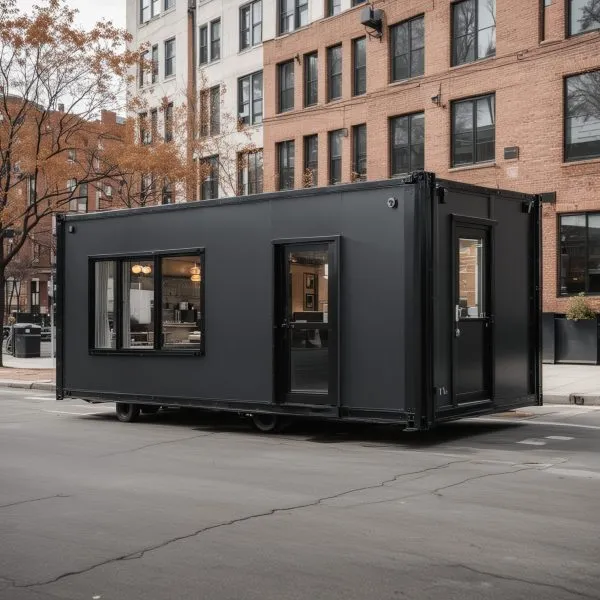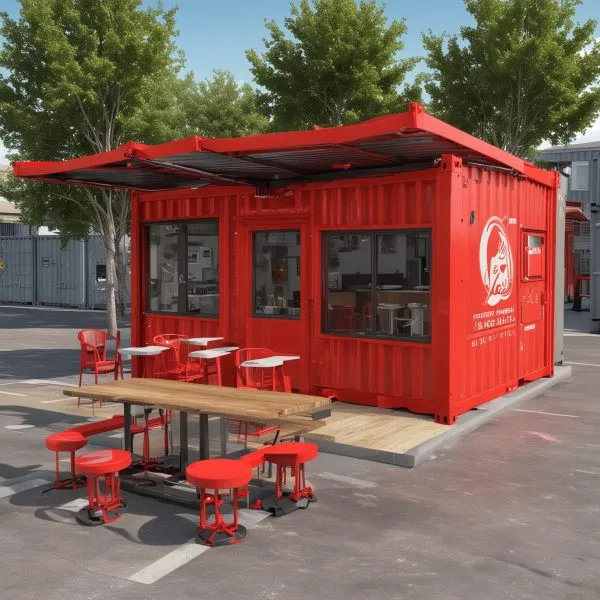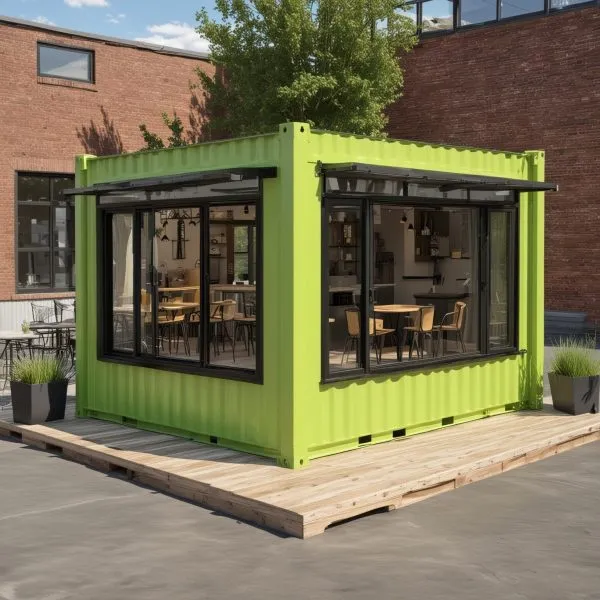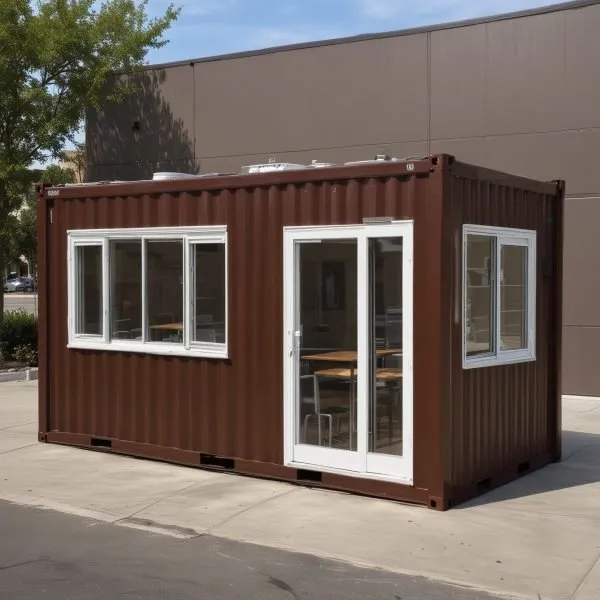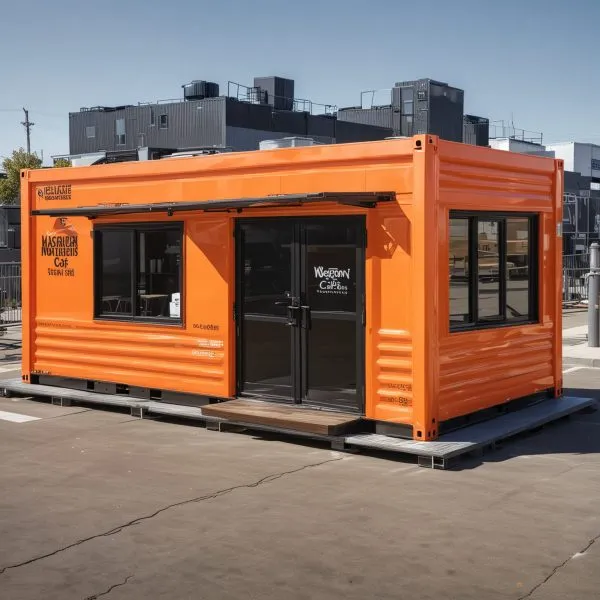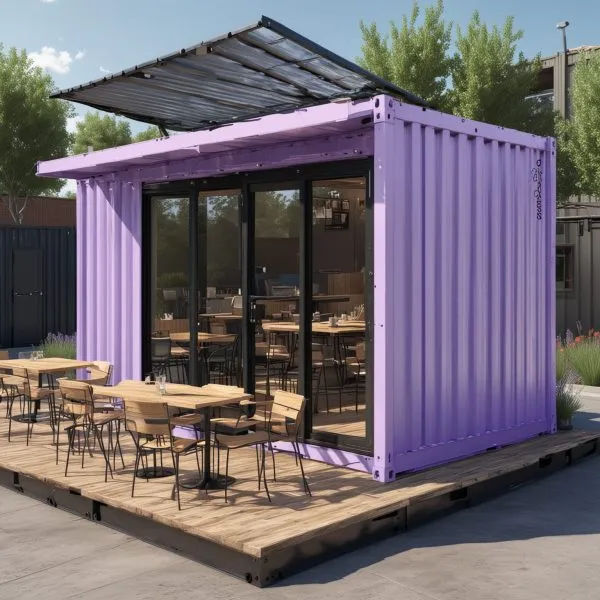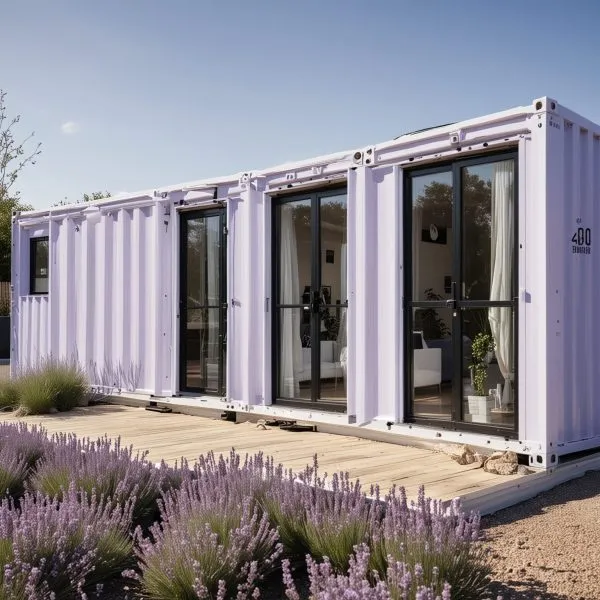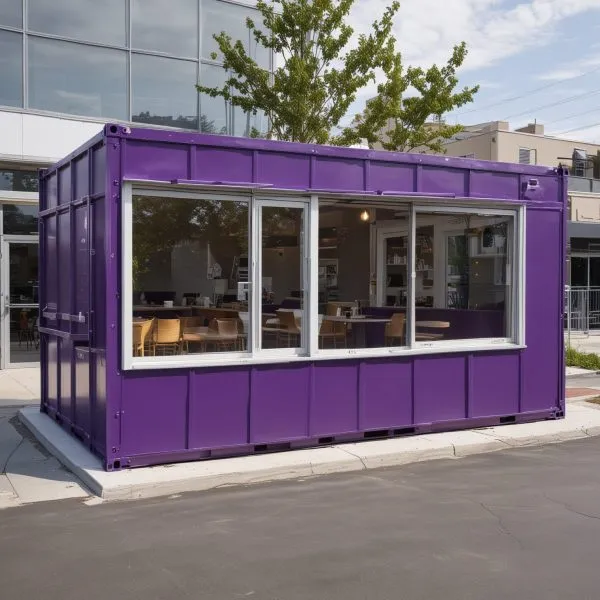Environmentally Friendly Architecture: Revolutionizing Spaces with Portable Cabins

In today’s world, we’re seeing a big change in how we build things. This change is all about being kinder to our planet. Portable cabins are at the heart of this shift. They’re changing how we think about building spaces.
Portable cabins are like magic boxes that can be moved and set up anywhere. They’re made from materials that are good for the earth. This makes them a better choice than old-fashioned buildings.
More and more people want buildings that are good for the planet. Portable cabins are leading the way. They’re making building and designing spaces easier and more green. Let’s look into why this is happening.
Key Takeaways
- Portable cabins offer a cost-effective and eco-friendly alternative to traditional construction methods.
- These modular structures can be quickly assembled and disassembled, providing flexibility and reducing operational downtime.
- Portable cabins are designed with energy-efficient features and sustainable materials, contributing to a lower carbon footprint.
- Customization options allow businesses to tailor their portable office spaces to meet specific needs, promoting productivity and efficiency.
- The mobility of portable cabins makes them ideal for industries that require flexible workspace solutions, such as construction and mining.
Understanding the Evolution of Portable Architecture
Portable architecture has evolved a lot since its early days. It now combines sustainability, flexibility, and advanced design. The history of modular buildings has led to today’s portable office cabins and prefabricated structures. This has changed the construction industry in big ways.
The Rise of Sustainable Building Solutions
More people want eco-friendly buildings now. Portable architecture has answered this need with green materials and designs. It uses recycled steel, low-VOC finishes, and renewable energy like solar panels. This makes portable structures key players in a greener future.
Modern Innovations in Portable Design
Today’s portable office cabins, modular buildings, and prefabricated structures are much different. They focus on being flexible, functional, and tech-savvy. Architects and designers are making spaces that can change with needs and tastes.
The growth of portable architecture is truly impressive. It has moved from simple beginnings to a modern, green, and tech-rich field. As we seek more eco-friendly buildings, portable architecture’s future looks very promising.

The Fundamentals of Portable Cabin Construction
Portable cabin construction uses new ways to build, like prefabrication and modular assembly. At the core are the Puf Panel Sheets. These are made of polyurethane foam between two metal layers. They keep heat in, last long, and go up fast.
The building starts with making parts off-site, then putting them together quickly on-site. This way is faster and better for the planet than old methods. It also lets cabins be made for many different uses.
- Puf Panel Sheets provide superior insulation and structural integrity
- Prefabrication techniques accelerate the construction process
- Modular assembly facilitates seamless customization and adaptability

This new way of building is a big change. It lets architects and builders make strong, changeable, and green spaces. These meet many different needs.
Environmentally Friendly Architecture: A New Paradigm in Construction
The world needs sustainable solutions, and architecture is key. Portable cabin construction leads this change. It uses new strategies that care for the environment.
Sustainable Materials and Methods
Portable cabins focus on green building materials. These include recycled and low-emission products. They aim to reduce environmental harm from start to finish.
From insulation to energy sources, every step is green. This makes the cabins eco-friendly.
Energy-Efficient Design Principles
Energy efficiency is crucial in portable cabin design. Features like insulation and solar panels cut down energy use. This makes living or working there better for the planet.
These designs also make spaces more comfortable. They show how to live sustainably without sacrificing comfort.
Waste Reduction Strategies
Porta cabins are built with waste in mind. They use prefabrication to cut waste by up to 52%. This makes building faster and cheaper.
By focusing on waste, these cabins follow the circular economy. They use resources wisely and reduce waste.
Portable cabins are changing the construction world. They set a new standard for being green, efficient, and waste-conscious. As we focus on climate action, these ideas lead us to a greener future.

Benefits of Choosing Portable Cabin Solutions
Portable cabin solutions are great for businesses looking for affordable, flexible, and green workspace options. They are a better choice than traditional buildings because they save money and are good for the environment.
One big plus of portable cabins is their cost-effectiveness. They cost less than regular buildings, both at first and over time. They don’t need a lot of setup, which saves money on foundations and other things. Plus, making them creates much less waste, which also saves money.
Another great thing about portable cabins is how flexible they are. They can be set up fast, which means less time lost and less hassle. Businesses can change their space easily, keeping up with their needs.
Portable cabins are also very eco-friendly. They’re made to last and use energy wisely, saving money and being kind to the planet. They can be taken apart, moved, and put back together again, which helps reduce waste.
In short, portable cabin solutions are a smart choice for businesses. They offer a flexible, affordable, and green workspace. With their quick setup, custom options, and green design, they’re changing how businesses think about their space.

Smart Technology Integration in Modern Portable Spaces
Portable architecture is changing fast, thanks to smart technology. These changes make portable spaces more efficient and sustainable. They use advanced tech to improve living and working conditions.
Automation Systems
Modern portable cabins and modules have smart automation systems. These systems control lighting, climate, and security. They make sure you’re comfortable and save energy.
Smart home integration lets you easily adjust your space. You can change the environment with just a few taps. It’s all about making your life easier.
Energy Management Solutions
Portable spaces now use energy monitoring tech to save resources. IoT devices like smart meters track energy use. This helps users cut down on waste and use energy wisely.
Smart tech is key to the future of portable spaces. It makes them energy-efficient and user-friendly. Portable architecture is becoming a model for green and smart design.

Cost-Effectiveness of Portable Cabin Construction
Portable cabin construction is a smart choice for those watching their budget. It saves money compared to building the old-fashioned way. The process is quick and uses resources wisely, cutting down on waste and labor costs.
Building off-site means less time lost to bad weather. This lets the site get ready and the cabin get built at the same time. This makes the whole project shorter.
This quick build time means less money spent on labor. It also means less trouble for the community. Plus, you can move or change the cabin later, saving money in the long run. Porta cabins are cheaper to buy or rent than regular buildings. They save money upfront and on upkeep.
Prefab structures like porta cabins are easy to move and set up. They’re made to last, even in tough weather and heavy use. This means they’re cost-effective for a long time.
| Feature | Benefit |
|---|---|
| Efficient Resource Utilization | Reduced material waste and labor costs |
| Off-site Construction | Minimized weather-related delays and shortened project timelines |
| Portable and Reconfigurable | Long-term cost benefits and flexibility for businesses |
| Durable Construction | Long-lasting use and reduced maintenance expenses |
In short, portable cabin construction is a smart choice for those looking to save money. It’s all about being budget-friendly, efficient, and good for the planet.
Design Innovations in Container Homes and Offices
The trend of container homes is growing fast. People want to live sustainably and affordably. Architects are making these homes for different places, from cities to remote areas. They use materials wisely and add green tech like solar panels and rainwater systems.
Space Optimization Techniques
Creative storage and foldable furniture help save space in container homes. Open layouts and big windows let in lots of light. Homes with many levels and outdoor areas are becoming more common.
Aesthetic Considerations
Materials like wood and stone cover up the industrial look of containers. Green roofs and walls are becoming popular. Building container homes in cities is tricky, but architects find ways to overcome these challenges.
Container homes help solve housing problems in cities where space is tight. They can be built to look like part of nature, using natural materials and green energy. They also come with smart tech like thermostats and security cameras.

Container architecture keeps getting better, offering both eco-friendly and fancy designs. Container homes change how we think about living and working spaces. They are pushing architecture to new heights.
Environmental Impact and Sustainability Features
Portable cabins lead the way in green building, cutting down environmental harm by a lot. They make up to 53% less greenhouse gas emissions. This means they reduce carbon footprint by about 73 tons over their life.
The secret to their green design is using recycled and eco-friendly materials. They also have energy-saving systems and water-saving features. Building in a controlled factory helps manage waste better, making these portable spaces even greener.
- Reduced carbon footprint through sustainable construction practices
- Use of recycled and eco-friendly materials
- Efficient energy systems and water-saving features
- Improved waste management and recycling in the controlled factory environment
| Sustainability Metric | Traditional Buildings | Portable Cabins |
|---|---|---|
| Greenhouse Gas Emissions | 100% | 53% reduction |
| Carbon Footprint | 73 tons | 73 tons reduction |
Portable cabins are changing eco-friendly architecture with sustainable construction practices and new energy-saving tech. They not only lessen environmental harm but also offer a cheaper, greener option for many uses.

Portable Offices: Transforming the Workplace
The modern workspace is changing fast, and portable offices are leading this change. These adaptable workspaces are changing how businesses work. They also meet the growing need for sustainable business practices.
Flexible Workspace Solutions
Portable offices are a flexible and affordable option for businesses. They can be easily changed or moved. This lets companies quickly grow, enter new markets, or set up temporary offices without the usual costs and environmental harm.
These offices are great for construction firms, event planners, startups, and schools. They offer a space that can be customized to fit different needs. They also use energy-saving tech and eco-friendly materials, making them good for the planet.
Corporate Sustainability Goals
Businesses are working to be kinder to the environment, and portable offices are helping. They use green tech, renewable energy, and eco-friendly building. This makes them a key part of sustainable workplaces.
Research shows green offices make employees happier and more productive. Portable offices focus on being green and efficient. They offer a better choice than traditional buildings, making workspaces healthier and more sustainable.
| Metric | Impact |
|---|---|
| Employees working in environmentally friendly spaces | 93% feel happier in their jobs |
| Employees working in non-environmentally friendly workplaces | 55% feel happy in their jobs |
| Modular building techniques | Reduced embodied carbon compared to traditional construction |
In India, businesses are getting more into green practices, and portable offices are key. They offer flexible, affordable, and green workspaces. This helps companies meet their green goals and keeps their teams happy and productive.
Material Selection and Durability Factors
In the world of portable cabins, picking the right materials is key. It affects how long the cabin lasts, how well it handles the weather, and how easy it is to keep up. Experts often choose advanced composites, engineered wood, and eco-friendly options. This ensures the cabin stays strong and lasts a long time.
Choosing materials that can handle the weather is crucial. These materials, like impact-resistant panels and weather-sealed joints, help the cabin last longer. They also make it less likely that you’ll need to fix or replace the cabin often.
Building cabins in a way that’s good for the planet is important too. Using materials that can be recycled, reused, and have a low carbon footprint is smart. This way, designers can make cabins that look great and are also kind to the environment.
| Material | Sustainability Features | Durability Factors |
|---|---|---|
| Aluminum | Highly recyclable, retains properties over infinite lifetimes | Corrosion-resistant, lightweight, and strong |
| Engineered Wood | Renewable resource, less wastage during manufacturing | Dimensional stability, weather-resistant, and easy to maintain |
| Composite Panels | Made from recycled materials, low embodied energy | Impact-resistant, insulative properties, and long-lasting |
When designing portable cabins, considering the materials and how durable they are is vital. This way, designers can create spaces that are not just good for now but also for the future. These cabins are built to last, handle the weather well, and are easy to care for. They show us a new way to build homes that are good for our planet.

Climate Control and Energy Efficiency Measures
In the world of portable cabins, keeping the climate right is key. This means using smart insulation and ventilation. These help keep the inside comfy and use less energy.
Insulation Technologies
Materials like Puf panels are top-notch for keeping the cabin warm in winter and cool in summer. They save a lot of energy. By using these materials, architects can make cabins that stay comfy all year without using too much energy.
Ventilation Systems
Ventilation in portable cabins is designed to bring in fresh air and use energy wisely. It uses the energy from outgoing air to warm or cool incoming air. This makes the cabin’s air better and uses less energy for cooling and heating.
Architects also use passive cooling techniques like smart windows and shades. These help keep the cabin cool without needing to use a lot of energy. This way, the cabins stay comfy without wasting energy.
| Insulation Technology | Energy Efficiency Impact |
|---|---|
| Puf Panels | Excellent thermal regulation, reducing heating and cooling demands |
| Energy-Recovery Ventilation Systems | Maximize natural airflow and pre-condition incoming air, lowering HVAC energy use |
| Passive Cooling Techniques | Leverage natural ventilation and solar control to minimize mechanical cooling requirements |
Using thermal insulation, energy-saving HVAC, and passive cooling, portable cabins can control the climate well. They do this while being kind to the environment.

Customization Options for Portable Structures
The world of portable architecture is changing how we design and use our spaces. Portable structures let people and businesses make spaces that fit their needs. They offer many customization options, from unique designs to modular setups.
Modular design is key here. These structures are built to be changed and grown. You can change the inside, the outside, and add new tech systems to meet your needs.
- Personalized Interior Layouts: You can design the inside of portable structures however you like. This could be an open office, a cozy home, or a versatile commercial space.
- Customizable Exterior Finishes: The outside can be changed to match your style. You can choose from metal, wood, or other materials to fit your taste.
- Integrated Smart Technology: These structures can have smart features like lights, climate control, and security. This makes living and working in them more comfortable and convenient.
This customization meets the needs of many areas, like homes, offices, and factories. It lets people create spaces that show who they are. Whether it’s a luxury home or a growing business’s office, portable structures can make it happen.
| Customization Feature | Benefits |
|---|---|
| Modular Design | Ability to easily modify and expand the available space |
| Customizable Interior Layout | Tailored to specific functional requirements and personal preferences |
| Exterior Finishes | Wide range of materials and styles to blend with the surrounding environment or make a bold statement |
| Integrated Smart Technology | Enhanced comfort, convenience, and energy efficiency through automated systems |
Portable structures are changing how we live and work. They offer flexibility and the chance to create spaces that are truly personal. This lets us turn our ideas into real places.
Regulatory Compliance and Building Standards
In the fast-changing world of portable architecture, following rules and standards is key. Portable buildings must follow local building codes, zoning rules, and strict safety regulations. This ensures the safety and well-being of those who use them. The controlled making of portable cabins allows for careful quality assurance steps. This ensures they meet industry standards.
As portable architecture becomes more popular, rules are being updated to keep up. The BREEAM rating system was the first global green building standard. It led to systems like LEED in the US and Green Globes in Canada.
These systems aim to make buildings more sustainable and environmentally friendly. The ANSI/ASHRAE/USGBC/IES Standard 189.1-2017 gives detailed guidelines for green buildings. The International Green Construction Code (IgCC) aims to lessen environmental impact.
In India, the IGBC Green Building Rating System is key for green construction. State governments offer benefits for projects that get certified. This includes more space or faster approvals.
Following these rules and standards makes portable structures safe and of high quality. It also opens doors to funding and boosts market value. But, getting certified can be tough. Not meeting standards can lead to legal problems. As demand for portable buildings grows, keeping up with changing rules is essential.
| Certification System | Key Features | Adoption Trends |
|---|---|---|
| BREEAM (Building Research Establishment Environmental Assessment Method) | Developed by the Building Research Establishment, it was the first global green building rating system. | Widely adopted in the UK and Europe, with growing international recognition. |
| LEED (Leadership in Energy and Environmental Design) | Introduced by the USGBC, it aims to enhance building environmental performance through a comprehensive evaluation framework. | Widely recognized and implemented globally, with a strong presence in the US and Canada. |
| Green Globes | Initiated by the Green Building Initiative in Canada, it promotes sustainable building guidelines and practices. | Primarily adopted in North America, with a growing footprint in other regions. |
| IGBC Green Building Rating System | Developed by the Indian Green Building Council, it is a pivotal tool for driving environmentally friendly construction in India. | Gaining traction as a leading green building certification system in India, supported by various government incentives. |
Future Trends in Portable Architecture
The world is moving towards sustainable urban development, and portable architecture is changing. New technologies and market needs are driving these changes. 3D printing is a key innovation that will change how we build portable structures.
This technology allows for more complex designs and faster building. It also means more customization and precision. Artificial intelligence (AI) is being used in design and energy management, making portable structures more efficient.
There’s a growing need for flexible, green living and working spaces, especially in cities. Portable structures can adapt to changing needs. They are expected to become more sustainable and durable, thanks to renewable energy and new materials.
The future of portable architecture is all about innovation and being able to adapt. Companies like SAMAN Portable Office Solutions Private Limited are leading the way. They are creating sustainable solutions that will change how we build.
FAQ
What are the key components of portable cabin construction?
Portable cabin construction focuses on Puf Panel Sheets. These sheets have polyurethane foam between metal layers. They provide great insulation, last long, and are easy to set up.
How do portable cabins contribute to sustainability and environmental friendliness?
Portable cabins are green because they use eco-friendly materials and designs. They also cut down on waste. This makes them 53% less harmful to the environment than regular buildings.
What are the key benefits of choosing portable cabin solutions?
Portable cabins save money and are easy to move. They cost less to build and take less time. This makes them great for businesses that need to grow or change quickly.
How do portable cabins integrate smart technology for enhanced functionality?
Modern portable cabins use smart tech. This includes systems for lights, climate, and security. It also includes energy-saving tech for better performance and less waste.
What are the customization options available for portable structures?
Portable structures can be tailored to fit many needs. They can be changed and expanded easily. This lets people create spaces that are just right for them, whether for living or working.
How do portable cabins address regulatory compliance and building standards?
Portable cabins follow all the rules to ensure they are safe and well-made. They meet local building codes and safety standards. This is because they are made in a controlled setting, ensuring quality and consistency.
What are the future trends in portable architecture?
Portable architecture is changing with new tech and market needs. We’ll see more 3D printing and AI in design. There’s also a big push for green, flexible spaces in cities.
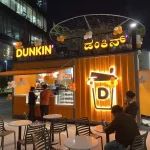 Container Cafe
Container Cafe